No other eMTB topic is as hotly and intensively debated as the motor. That is why we tested the 13 most important systems from 10 different manufacturers for our big eMTB motor comparison, revealing some huge differences, making some exciting findings, and offering clear recommendations! Read on to find out what sets the various systems apart and which eMTB motor suits you best!
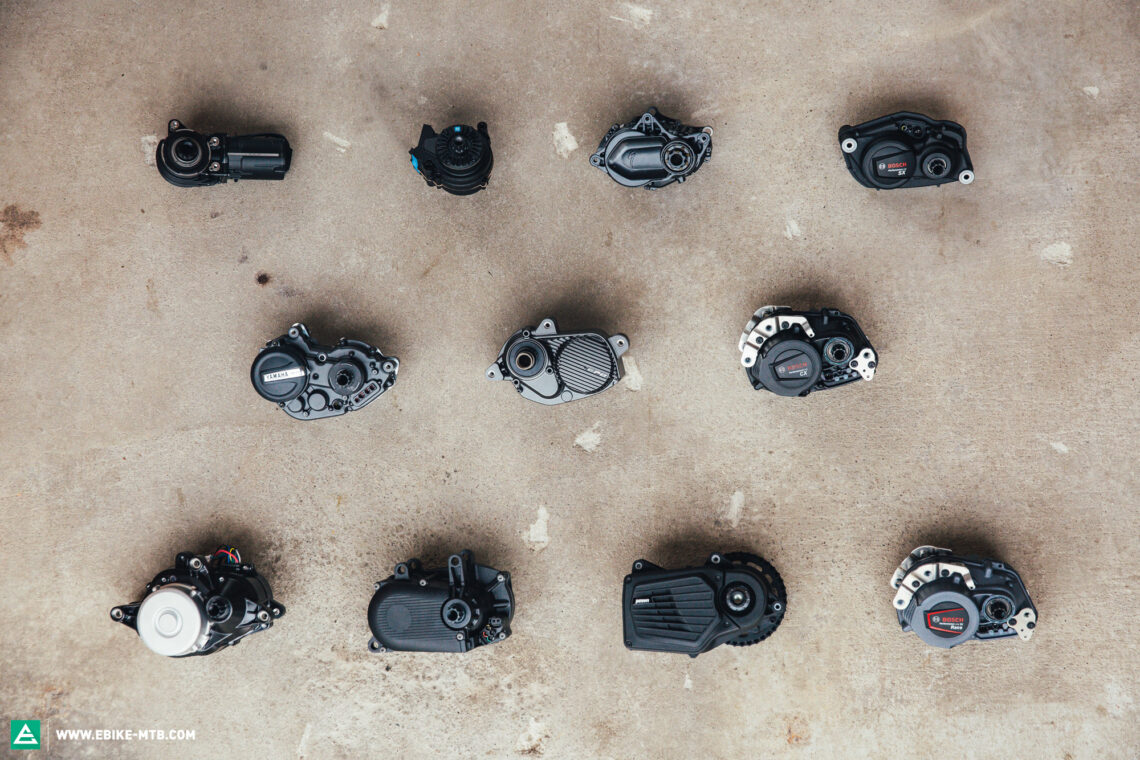
Table of content
- The test field of our big eMTB motor comparison
- What makes a good eMTB motor?
- Ebike motors for everyday (trail) life: How do you plan to ride your eMTB and what matters to you?
- Glossary – The most important eMTB motor terms and key figures
- Behind the Scenes: How we tested the eMTB motors on the trails and in the lab
- Details and features: What to look for on an eMTB motor
- Motor noise on an eMTB – Not just a question of sound, but also of the riding experience and perception of quality
- The market maturity and service network of eMTB motors
- The strengths and weaknesses of the eMTB motors on test
- Which is the best eMTB motor for you?
The speed of development in the e-mountainbike industry and especially of eMTB motor systems is insane. Within a timespan of less than 10 years, big, bulky motors have become the elegant, high-tech drive units of today – reason enough for us to take an in-depth look and compare 13 of the most important eMTB motors currently on the market in our big eMTB motor comparison. If your heart is already beating a little faster in anticipation, and you’re thinking of skipping ahead to find out who comes out on top, we recommend taking a deep breath, keeping calm, and reading on – it’s worth reading the full article. This is a comparison, not a competition, and if we discovered anything, it’s that there’s no such thing as THE best motor.
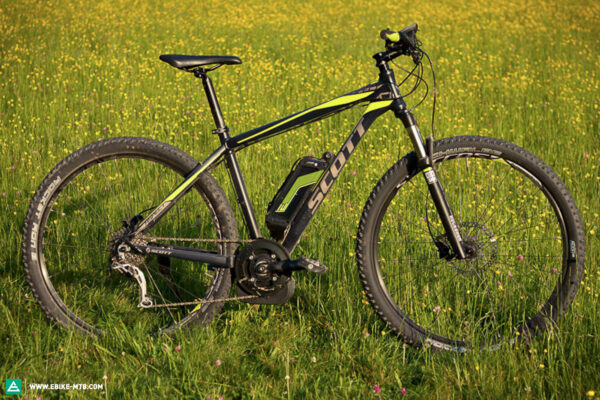

The effort we put into this comparison was immense, putting the motors through the wringer during countless head-to-head test runs, on different bikes, but the same test track. Not every motor performs the same in every bike, or reveals its true strengths and weaknesses. We also annexed the laboratory of the Velotech testing institute for 3 weeks to put all 13 motors on their in-house test bench, with some surprising results. However, if you’re expecting to see a whole lot of charts and graphs, we must disappoint you – while offering an interesting baseline, lab figures don’t reflect the complex reality of an eMTB on the trail.
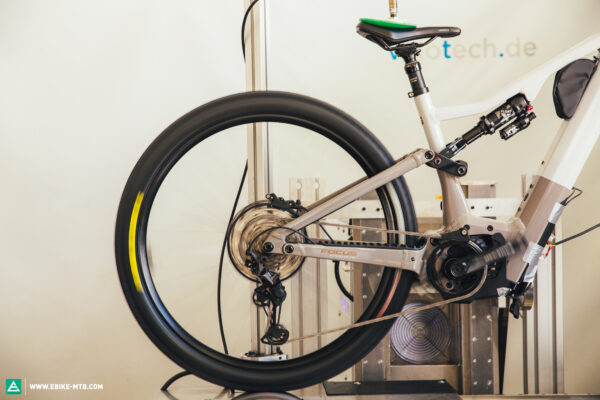

Unlike a car, an eMTB is a hybrid of man and machine, with a lot more variables that influence the behaviour of the system as a whole, and ultimately the riding experience. As such, we incorporated the lab results into the individual test reports very carefully, using them to substantiate what we felt on the trail. It’s only what you can feel and perceive in real-world conditions that ultimately counts. If you’re looking for performance figures that sound impressive and charts that you can use to brag about why your eMTB is best around the campfire, you’ve come to the wrong place. Our priority is having fun, aboard bikes that are safe, reliable and perfect for our individual requirements – and there are some big differences between these for different people!
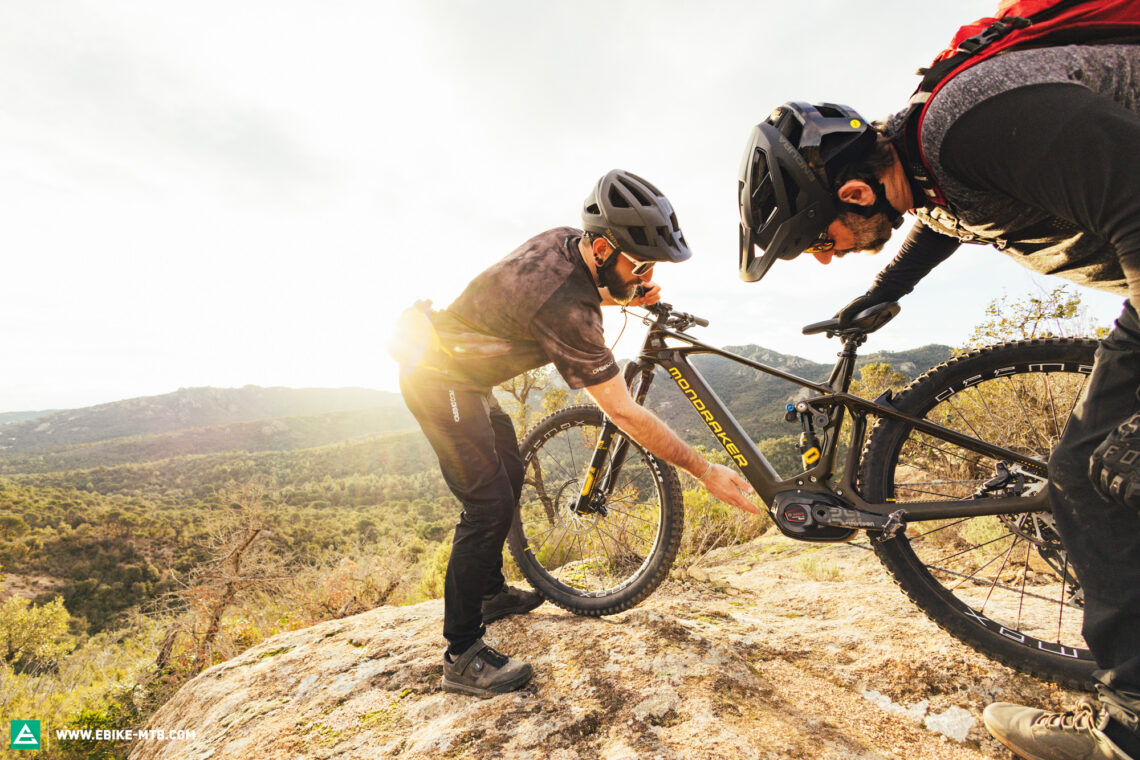
The range of motor systems is greater than ever: from small, almost invisible motors with low or medium support – so-called minimal-assist or light motors – to real power houses, a.k.a. full-power motors. Some new players who promise to strike the perfect balance between weight, power, and efficiency have also entered the market. While this might be just the ticket for some, it may well be the wrong concept for others. The aim of this comparison is to give you the ultimate market overview, providing the respective characteristics, strengths, and weaknesses of each motor system to help you buy your next eMTB. Of course, we also have plenty of reading material for those who just like keeping up to date!
There’s a good reason why the best motor doesn’t exist or, rather, why we refuse to nominate one: a motor is always part of a system, requiring you to consider countless other aspects – from the battery, display, and control unit, to apps, digital customisation options, and after-sales service. Besides, the best motor is only as good as the bike it’s in. In the end, it all comes down to having a coherent package, as some motors simply suit the character of certain bikes better than others. Our latest mega eMTB group test of the 30 hottest eMTBs proved this once again – after all, what good is the most powerful motor if it’s fitted to a bike that throws you off the back as soon as you approach an incline?
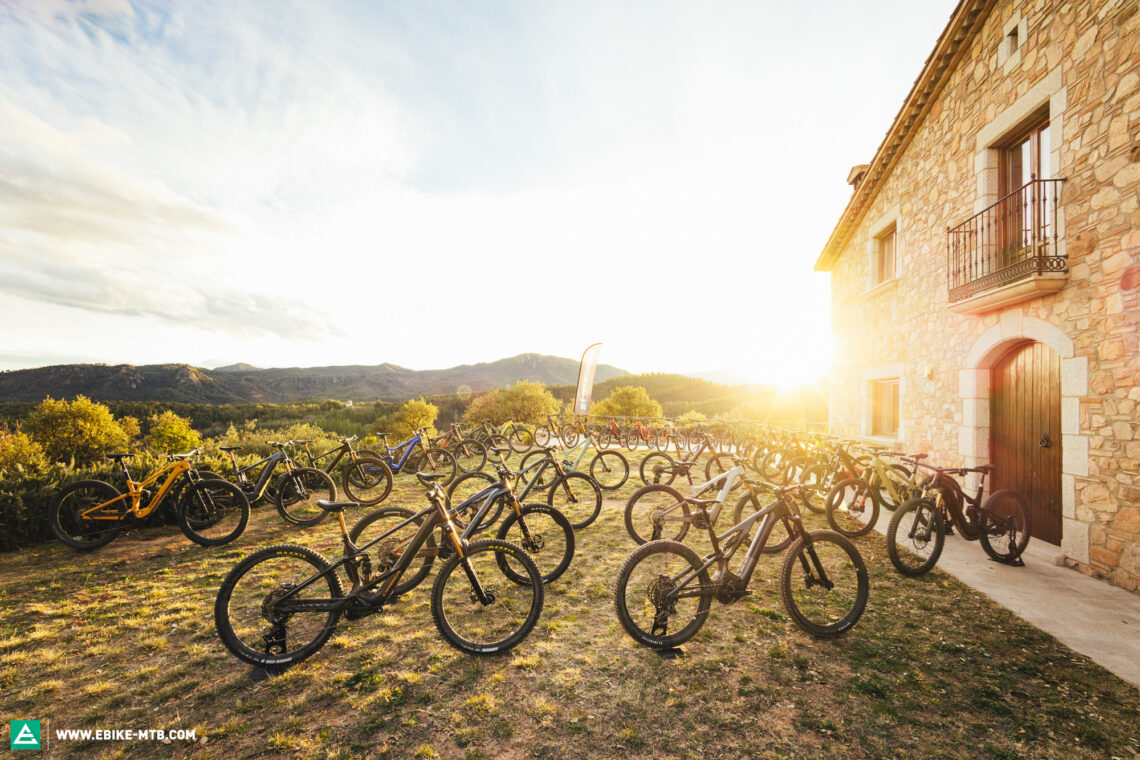
The test field of our big eMTB motor comparison
Of the motors on test, three came from Bosch. The German ebike systems giant wasn’t just represented by their long-running Performance Line CX motor, but also by the race-tuned Performance Line CX Race, and the brand new minimal-assist SX model. Specialized also fielded several models: the powerful Turbo 2.2, and its lighter, minimal-assist sibling, the Specialized Turbo SL 1.2 motor. Representing Shimano is the successor to the EP8, the Shimano EP801, boasting exciting new connectivity features as well as improved performance, with no shortage of eMTBs on the market relying on this system. Also included were the four powerhouses: the Brose Drive S Mag, Yamaha PW-X3, Giant SyncDrive Pro 2, and the Panasonic GX Ultimate. We found out whether they’re all brawn and no brains, or if they’ve got the dexterity to make the most of their power. Stirring up the scene, Pinion recently launched the brand new MGU E1.12 motor-transmission unit. It promises nothing less than a revolution and a future without derailleurs – we’re excited to see how this development unfolds! The test field is completed by two other minimal-assist motors that set the light eMTB market alight in 2022/23: the FAZUA Ride 60, and the TQ HPR50. Our comparison reveals how they stack up against the Bosch SX and Specialized Turbo SL 1.2, as well as their significantly more powerful competition.

Once you reach your cruising cadence, all motors operate well below the maximum torque, specified by the manufacturers, and it’s factors like maximum power that play a bigger role.
There’s a motor we didn’t test? Yep – there are other models on the market, but for our eMTB motor comparison, we focused on the biggest players and most relevant motors, as used by the hottest and most in-demand bike brands. Besides, a test field of 13 motors is big enough as it is, requiring an immense effort. Anyone who strolled through the motor hall at EUROBIKE 2023 will have seen that there are many more models from other manufacturers out there. However, these hardly play any role on the premium eMTB market, or simply lack the service network and production quantities to be relevant here – our test field only includes the most relevant manufacturers and concepts. If you want to know more about exotic systems like the Polini EP3, maxon BIKEDRIVE AIR, or BAFANG EonDrive, check out our big eMTB group test, which includes ebikes with these motors.
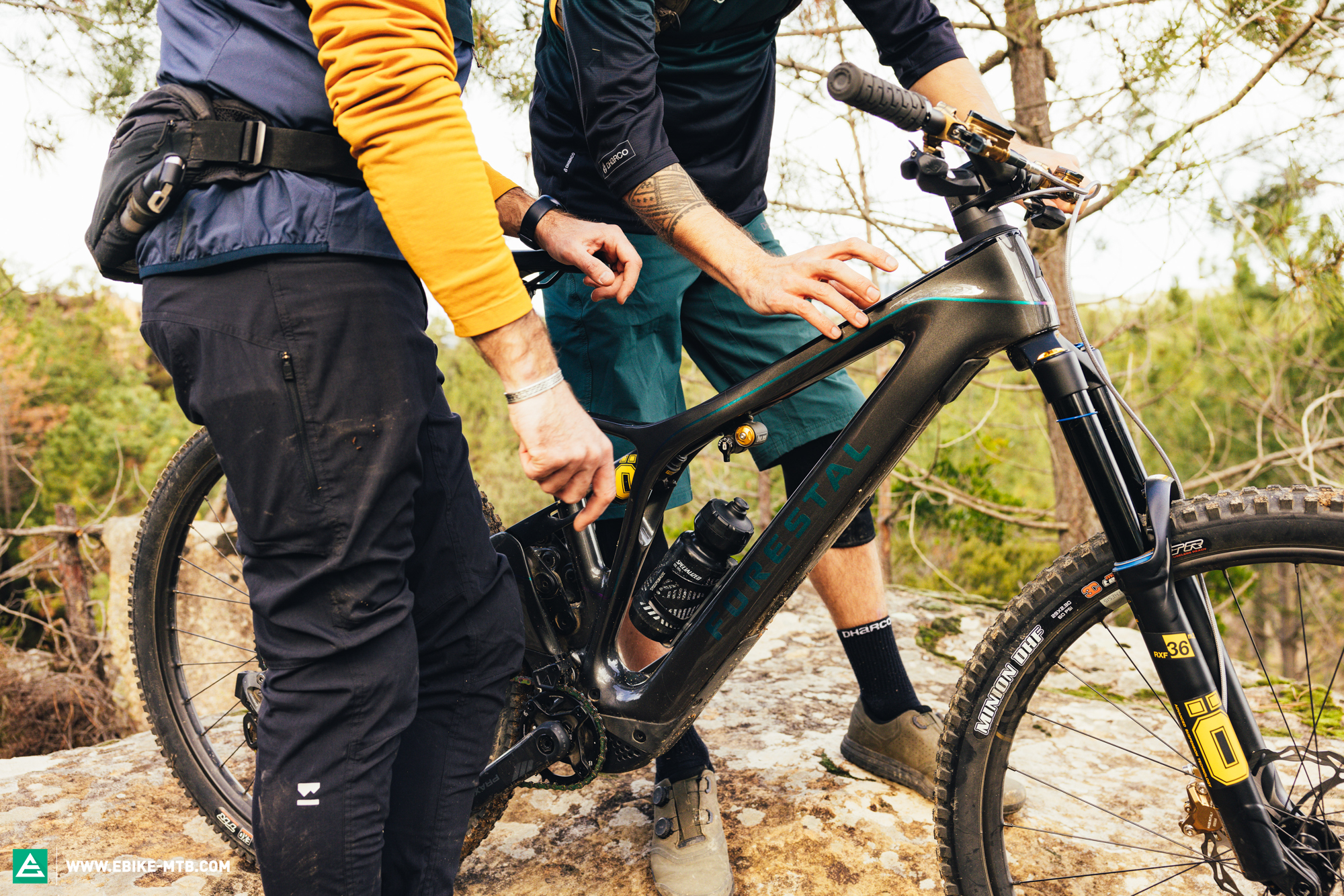
What makes a good eMTB motor?
There are many factors that define a motor system and contribute to its overall performance. Maximum power, responsiveness, modulation, power delivery, and noise are some of the traits that distinguish a motor. The ecosystem around the motor determines whether it’s a joy to use or simply results in frustration. A simple and intuitive remote combined with an informative, clear, and easily readable display promises the former. Less so with bulky, poorly positioned remotes, oversized displays, and limited information content. Well-made apps allow you to engage with the bike, and adapt the motor’s parameters to suit your preferences. They also allow you to download updates for the motor, providing new functions or fixing bugs. Smart navigation features with range estimates can open up entirely new perspectives on your rides, while integrated anti-theft protection, alarms, and GPS tracking provide added peace of mind when you leave your beloved two-wheeler parked outside to get refreshments. The integration of the drive unit also determines the look of an ebike. A slender frame with flowing lines, or a chunky, industrial-looking down tube? We’ve got a clear preference…
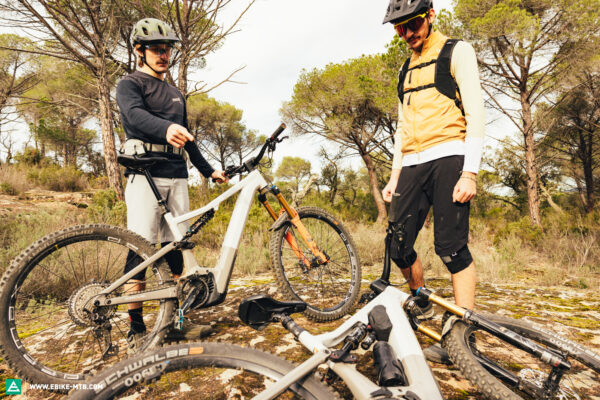
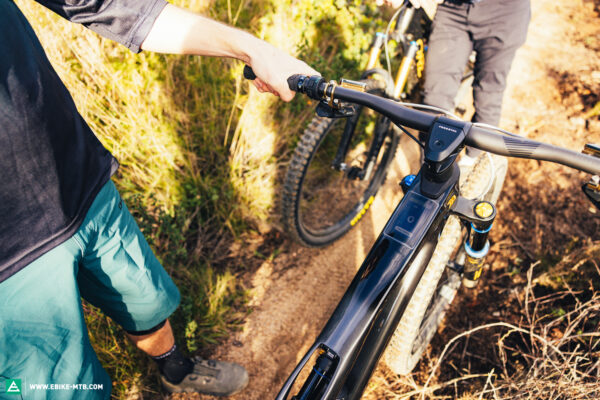
A motor system is made up of a combination of various factors, giving each of the 13 motor systems in our eMTB motor comparison their own unique character. Of course, the price also plays a role, though it doesn’t make sense for us to take this into account since you won’t buy the motor on its own, but rather as part of a complete build. There are big differences here, nonetheless. In sum, all these aspects result in the ideal system for a specific rider or prospective rider – all you have to do is find your match. That’s why we’re not crowning one motor as THE best motor, but instead want to provide you with the most comprehensive buyer’s guide, to help you find the right system for your needs. But be careful! That doesn’t mean you should run to the nearest store and just buy any bike with the motor that you’ve chosen. Again, the drive unit is just one link in the chain, and they all have to mesh. Before making a purchase, it’s important to understand how everything plays together. That way you will have a much better understanding of the bike you’re looking at. You can read more about this in our big eMTB group test of 30 bikes – the world’s most comprehensive eMTB comparison! If you’re still unsure which eMTB is best for you, check out our personalised, interactive buyer’s guide. It won’t just tell you what type of e-mountainbike rider you are but also suggest a range of articles that you might find interesting. Of course, we’ll also give you a list of specific bike recommendations. What are you waiting for?
The eMTB motor test field
| Manufacturer | Model | Torque [Nm] | Support [%] | Motor weight [kg] |
|---|---|---|---|---|
| Bosch | Performance Line CX (Click for review) | 85 | 340 | 2.9 |
| Bosch | Performance Line CX Race (Click for review) | 85 | 400 | 2.75 |
| Bosch |
Performance Line SX (Click for review) | 55 | 340 | 2.05 |
| Brose | Drive S Mag (Click for review) | 90 | 410 | 2.98 |
| FAZUA | Ride 60 (Click for review) | 60 | 388 | 1.98 |
| GIANT | SyncDrive Pro2 (Click for review) | 85 | 400 | 2.75 |
| Panasonic | GX Ultimate (Click for review) | 95 | 300 | 2.95 |
| Pinion | MGU E1.12 (Click for review) | 85 | 400 | 4.1 |
| Shimano | EP801 (Click for review) | 85 | 400 | 2.7 |
| Specialized | SL 1.2 (Click for review) | 50 | 237 | 1.93 |
| Specialized | 2.2 (Click for review) | 90 | 410 | 2.98 |
| TQ | HPR 50 (Click for review) | 50 | 200 | 1.85 |
| Yamaha | PW-X3 (Click for review) | 85 | 400 | 2.75 |
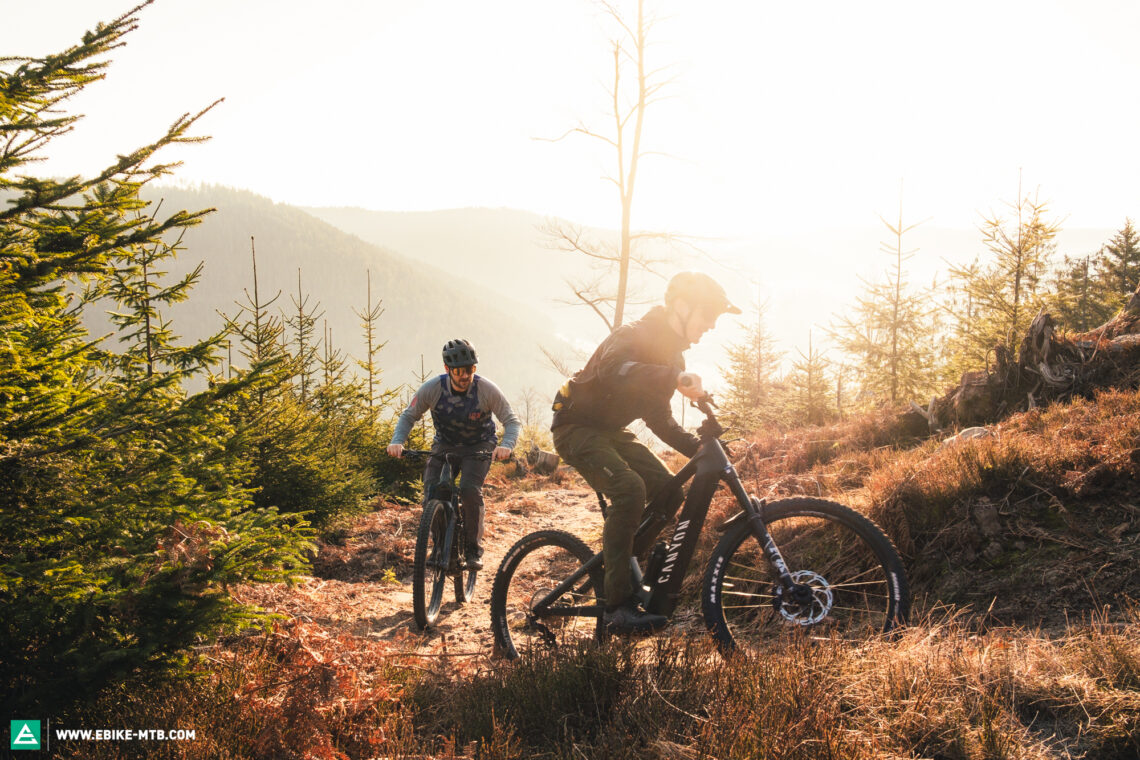
Ebike motors for everyday (trail) life: How do you plan to ride your eMTB and what matters to you?
“How big is the battery, what’s the range?”, “How much torque does the motor have?”, or simply “I want an ebike with a Bosch motor, which one is cheapest?.” Questions like these are common from newbies on their first trip to the bike shop. Without knowing what you need, however, you can’t ask the right questions. So, to give you an example, we asked our E-MOUNTAINBIKE editors what they look for:
Felix – Post-work eMTB rider
I often end up doing overtime during the week, which is why my post-work sessions tend to be relatively short. So, although I usually prefer analogue mountain bikes, I’m increasingly turning to light eMTBs. This allows me to complete my standard loop in less time and still have a light bike that suits my playful riding style. With my rides ending at sunset and the minimal-assist motors typically consuming less energy than full-power units, the smaller battery is perfectly sufficient for my needs – don’t be fooled into thinking you must have a massive battery!
Susanne – The relaxed cruiser
While the others in the office like blasting along the trails, I prefer taking it easy and enjoy long rides on the weekends. I like chatting with my husband and friends as I ride instead of having to breathe so heavily that I can’t speak. Therefore, I need a powerful motor that allows me to cruise along at low cadences when I feel like it. However, it should deliver the power gently and controllably – the bike shouldn’t surge forward the moment I accidentally touch the pedals. As for batteries, I can no longer imagine riding without a large capacity model upwards of 700 Wh. That way I’m not limited in my range when going on long rides, and can still reach every peak while on holiday in the Alps.
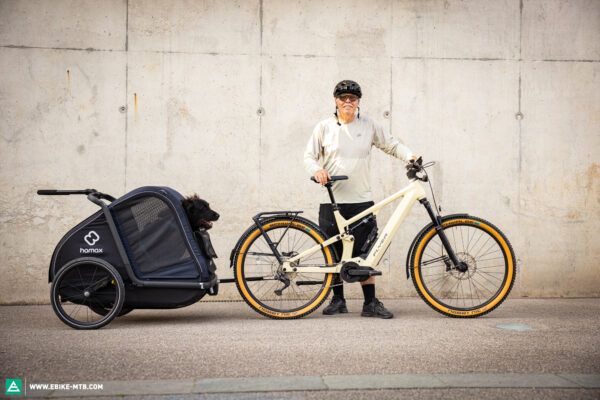
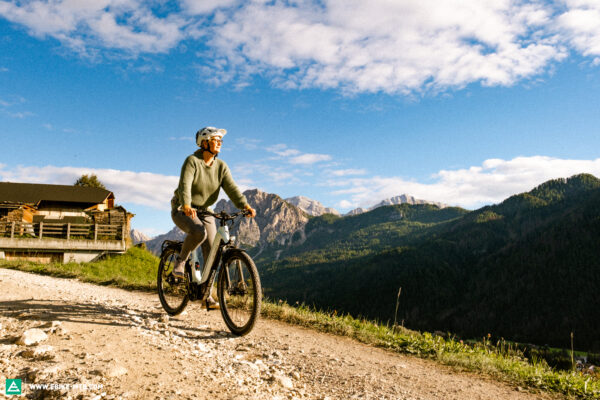
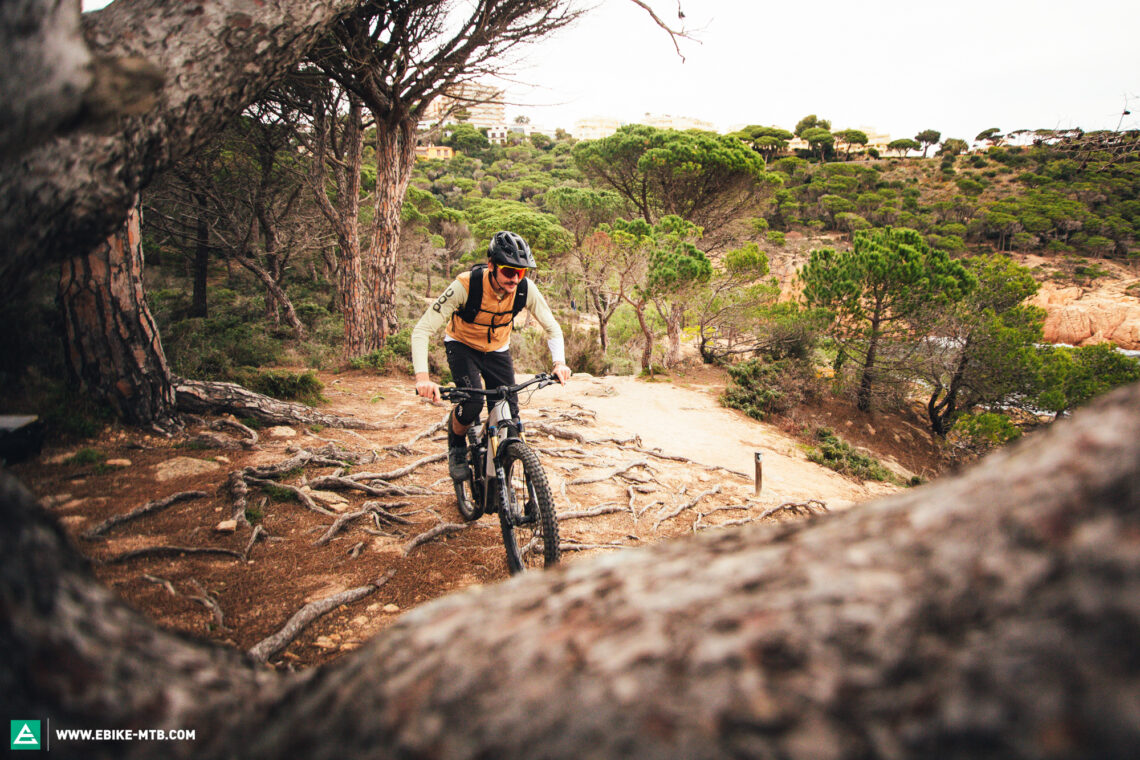
Erik – Simply because it’s awesome!
I love new technology! Whether it’s more powerful motors or even bigger batteries that the manufacturers come up with – it fascinates me. So, when I buy a bike, I want the maximum power and the maximum battery capacity, simply because it’s awesome – more is better, right! Even if I tend to use the lower support modes, and almost never run out of battery… I don’t mind if this compromises the handling a little bit in order to get all the latest features, although the innovations in the light eMTB segment are also starting to tickle my fancy.
Manne – Not without my Henry!
I don’t go anywhere without my furry sidekick, Henry. That’s why my eMTB usually has a dog trailer attached to it, whether I’m headed out on a tour or just commuting to the office. To be able to pull away with my dog and trailer, I need a powerful motor with a lot of torque, though with good modulation. A positive side effect of this is that I can get to the office without getting covered in sweat and needing another shower.
Robin – Home trail racer
I have a soft spot for anything that’s fast, so it’s obvious which mode I use when I ride my eMTB: Turbo! Since I primarily ride on my home trails around the office, and weigh a scant 70 kg, a 600 Wh battery is plenty for me, despite setting a brisk pace. If I’m planning a longer tour, I think the option of a range extender is super important. That way I don’t have to carry unnecessary weight on day to day rides, giving me a bike with fun and playful handling. However, if I need more battery capacity, I can always just grab the range extender from the garage.
Mike – Involuntary auto mechanic
Since my Land Rover forces me to spend much of my free time in the workshop, I can’t use an eMTB that needs the same level of TLC. If something breaks, I don’t want it to result in a wasted bike holiday either. I can service my analogue bikes with my eyes shut, but faulty electronics often require special analytics tools that only dealers have. That’s why a large dealer and service network is super important to me, whether on holiday or at home. If only it were that easy with my Defender…

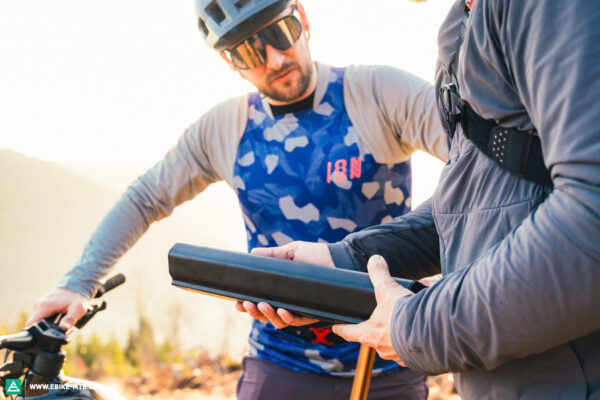
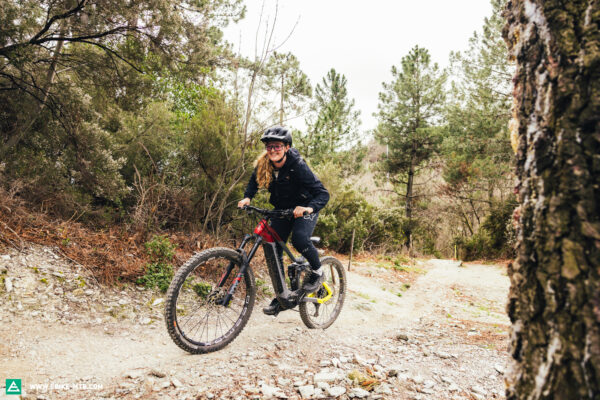
Peter – Techy-climb connoisseur
When I’m riding an eMTB, I want to have fun in both directions: uphill and downhill. That’s why I want a powerful motor with direct power delivery, and a generous amount of sustained assistance, allowing me to conquer the steepest and most technical climbs. To get the most from the drive unit, I want a well-designed app that allows me to tune the motor to suit my requirements – and I want to do so without first getting a degree in computer science and physics. While some apps are intuitive and user-friendly, other apps tend to overwhelm their users when attempting to tune the motor.
Rudi – Connectivity guru
For me, the connectivity features of a motor system are at least as exciting as riding. I particularly like systems that offer a high level of customisation of the support modes – just dragging a bar from right to left doesn’t cut it for me. I want to see the appropriate power curve with as much detail as possible – that gets my nerdy heart pumping. As for integrated navigation features, I want something that offers real added value over apps like Komoot. Navigation with an integrated elevation profile and range calculator ensures that you no longer have to be afraid of getting stranded with an empty battery.
Antonia – Eager to learn
I’ve only been riding eMTBs for a few years now, and I’m currently trying my first uphill challenges. I find that the more powerful and unrestrained motors make them particularly difficult. Unless you’re very careful, you can easily overshoot the target and land on your back. That’s why I feel most comfortable on good-natured, responsive motors that are easy to modulate and not overly powerful. These allow me to improve my riding skills in a relaxed way.
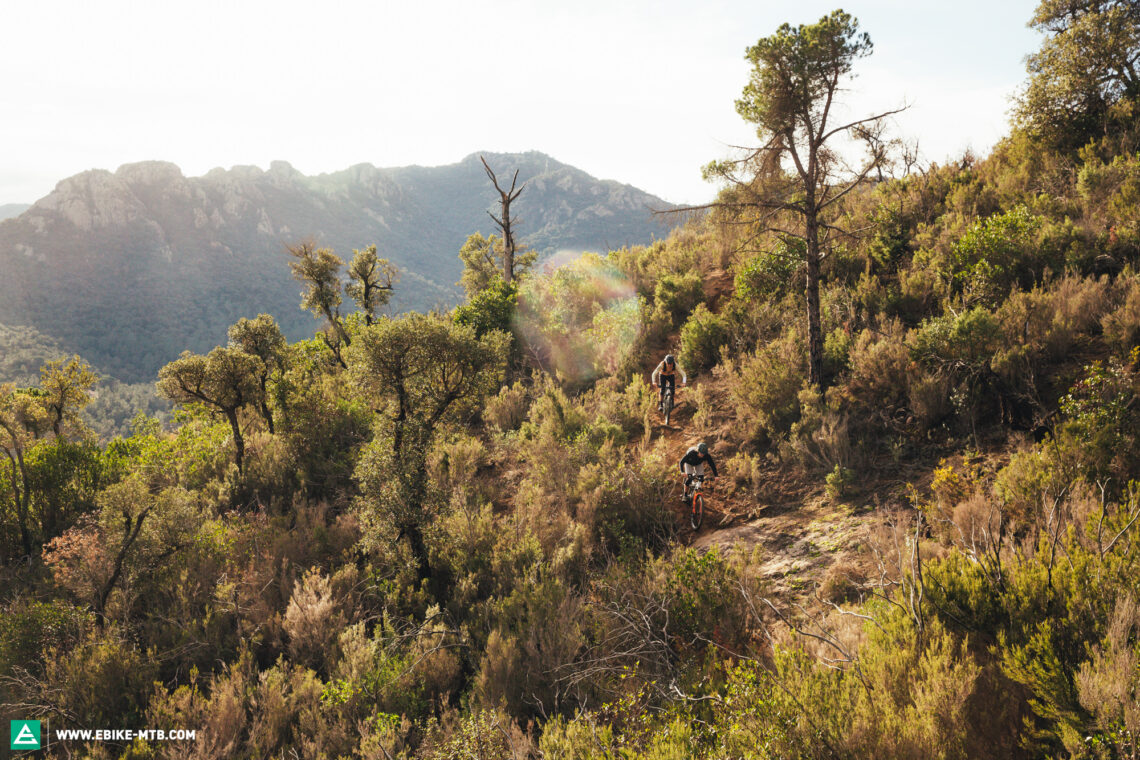
Glossary – The most important eMTB motor terms and key figures
When discussing eMTB motors, it’s easy to get bogged down in terminology. To understand how these metrics actually affect the ride, we’ve written brief and comprehensible summaries of the most important terms you’ll read about in our eMTB motor comparison.

The torque of an eMTB motor
Expressed in newton metres (Nm), torque serves to indicate how powerful a motor is. This key figure determines how vigorously the motor propels you forward on the trail. In practice, the amount of torque available is noticeable when pulling away, or on steep climbs in heavy gears – i.e. at low pedalling cadences. Once you reach your cruising cadence, all motors operate well below the maximum torque specified by the manufacturers, and it’s factors like maximum power that play a bigger role. The software also plays a critical role, which is why motors with the same specified torque can feel very different on the trail. The best example of this is the Bosch Performance Line CX and CX Race motors, which don’t just have the same basic specs, but also rely on largely the same hardware. However, if you activate Race mode on the CX Race model, the power delivery is a lot less restrained and the response is much more direct compared to the standard Bosch Performance Line CX motor.

The power output of the eMTB motor
The power output is given in watts (W) and, in the EU, eMTB motors are limited to a continuous rated output of 250 W. However, this doesn’t mean that eMTB motors can’t exceed the 250-watt limit in “short bursts”. As a result, the maximum power output of all the motors on test is well above 250 W, with many of them capable of unleashing more than twice that. A motor’s power output is the product of torque and cadence. This means that the power is heavily dependent on the cadence, i.e. how fast you’re pedalling. Furthermore, there’s a distinction between electrical and mechanical power. The electrical power is the power consumed by the motor, while the mechanical power is that which is actually transferred to the ground, minus frictional losses incurred by the motor, drivetrain etc. For comparison, an average rider puts out about 100 watts of power. If you can produce 150 watts consistently, you can already count yourself among the fitter riders. On technical climbs, our test crew managed to push the power metre needle up to the 350 watt mark. A Tour de France rider can generate over 400 watts average power for an hour….

The assistance ratio of eMTB motors
The assistance ratio is the ratio of the motor’s output to the rider’s input. If a motor delivers 100% support, it matches the rider’s input (rider input times 1), effectively doubling the total output at the rear wheel (100 W rider input plus 100 W motor output equals 200 W total output, not considering energy losses in the form of friction and heat). The more powerful a motor is, the larger the assistance ratio can be. The most powerful motors can put out up to four times the rider’s power and more. However, this is limited by the motor’s maximum power output, which currently hovers at around 600 W for most full-power motors. Once the eMTB motor reaches that limit, it can do no more. So, if you’re putting in 200 W with 400% assistance, the motor won’t magically produce 800 W if its maximum output is 600 W.

The pedalling cadence and eMTB motors
The pedalling cadence, given in revolutions per minute (RPM), refers to the speed at which you’re pedalling. During tech talk at the trailhead, cadence doesn’t get mentioned nearly as often as torque and power, though it has a major influence on both these sexier-sounding factors. As the cadence increases, the torque decreases, while the power increases until it reaches its peak. Cadence also plays a role in the effectiveness and efficiency of the motor. Most motors are only capable of unleashing their full power over a certain range of cadences. The earlier the full power is available, the better for racers and aggressive riders. That said, relaxed riders who like being shuttled at a low cadence will also benefit from this – as long as the power delivery is easy to modulate and control. In addition, every motor has a cadence range in which it performs most efficiently. With most motors, this sweet spot starts at around 60 and goes up to 100 RPM. The optimal cadence range has grown with the latest generation of motors – with exceptions like the Bosch SX. Pedalling within the optimal cadence range offers improved efficiency and effectiveness, resulting in optimal performance. Note: Speeding up your cadence doesn’t mean you must pedal harder – you can also shift down to an easier gear to optimise your pedalling speed. In order to call up all the available power, it’s particularly important to pedal within the optimal cadence range of minimal-assist motors! Several of the manufacturers display the current pedalling cadence on the display.
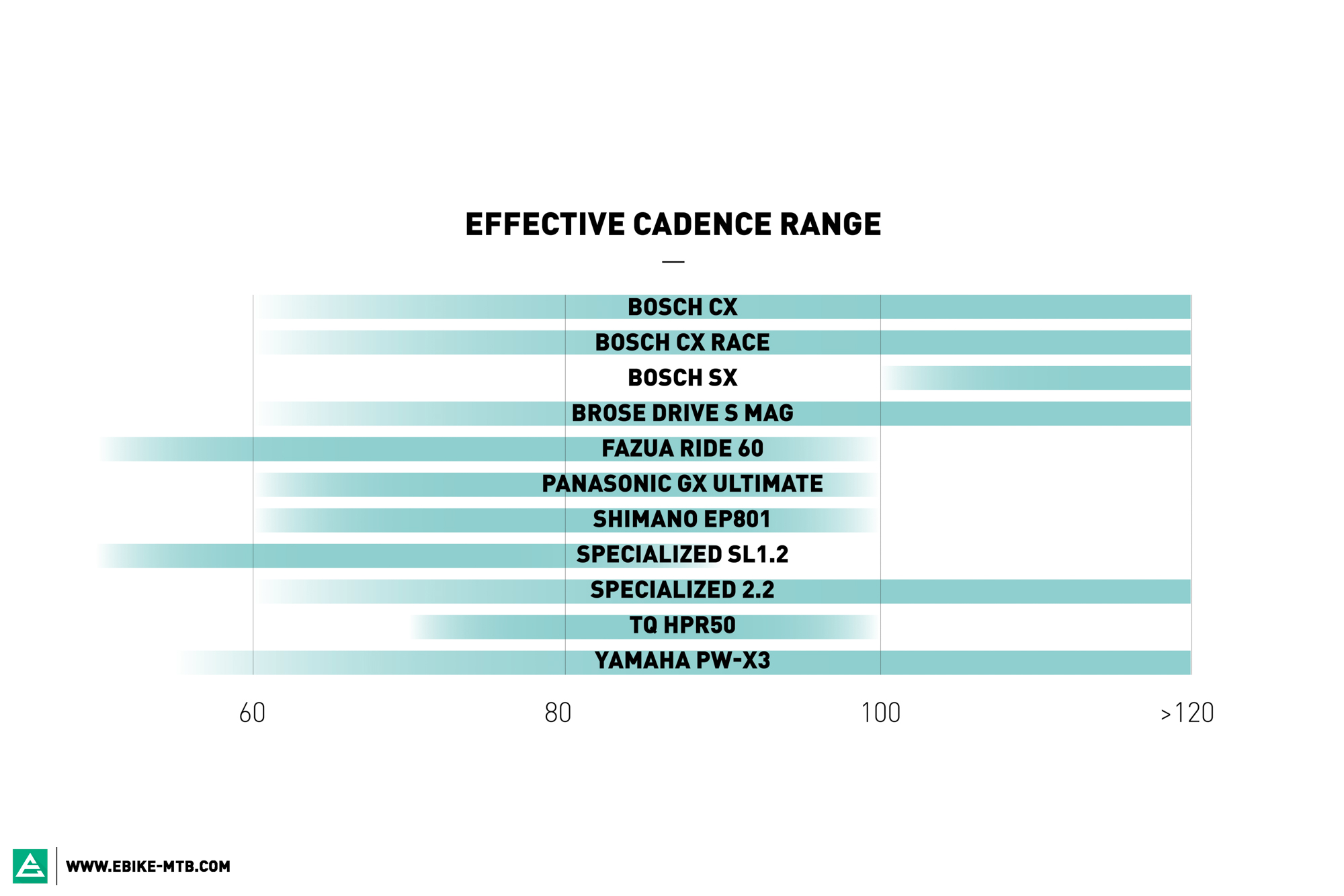
The sustained assistance of eMTB motors
The sustained assistance of an eMTB motor determines how long the motor keeps on churning after you’ve stopped pedalling. Depending on the motor, the length and power of the sustained assistance varies greatly. However, the DIN EN standard limits it to two metres in the EU. A long sustained assistance is especially useful in technical terrain, allowing you to get up and over obstacles where you can’t pedal continuously. You can also benefit from the sustained assistance in other situations where you’ve got pedal clearance issues. The speed at which the sustained assistance cuts out ultimately affects the bike’s handling: an abrupt stop can feel like you’re hitting a wall, while a smoother fade-out results in a more natural-feeling experience.
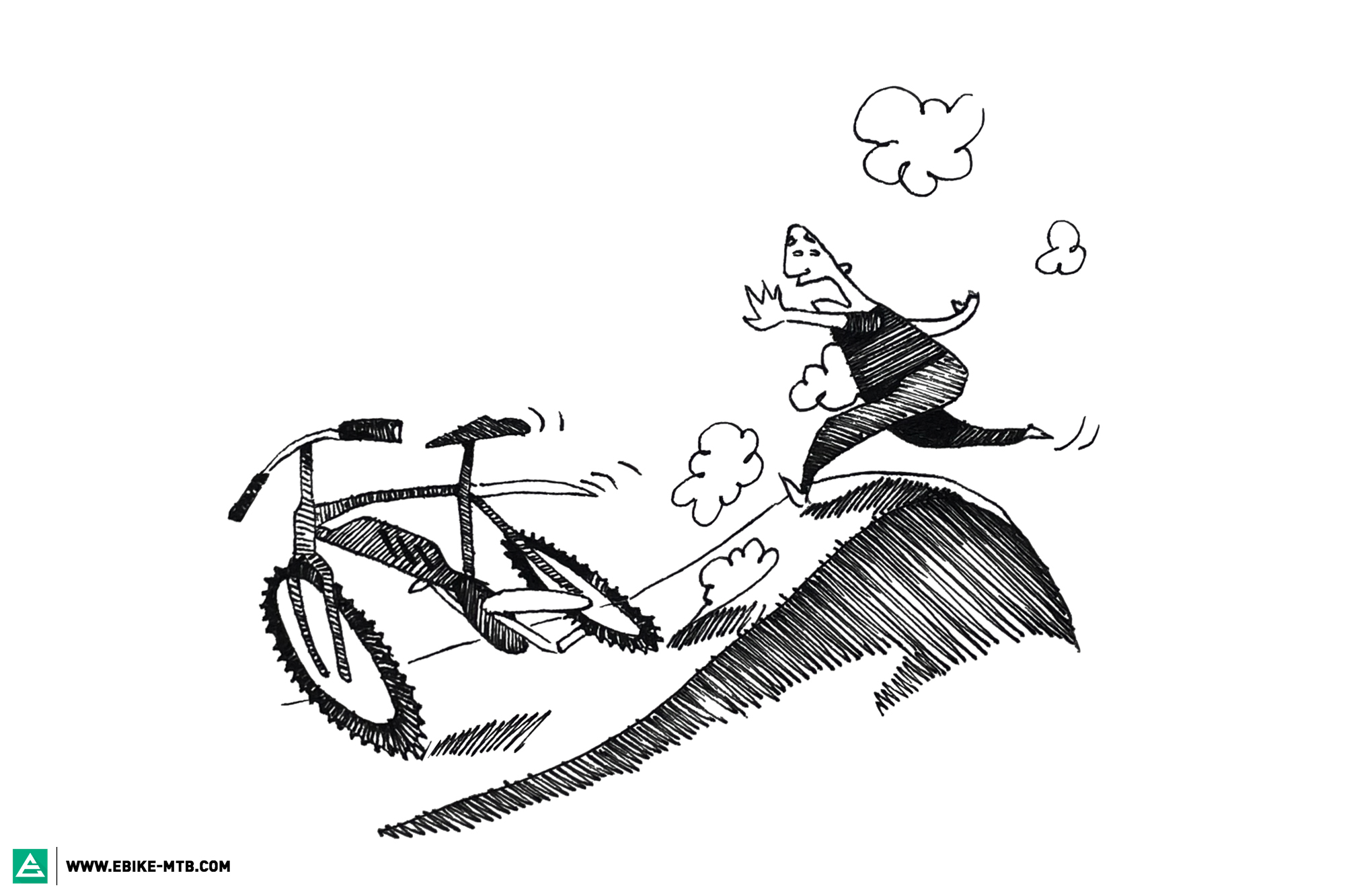
The capacity and energy density of ebike batteries
The battery capacity, expressed in watt-hours (Wh), indicates how long a specified amount of power can be drawn from a battery. In theory, a 750 Wh battery could power a motor with a constant electrical power of 750 W for 1 hour. A minimal-assist motor that can draw a maximum of 300 W of electrical power can theoretically consume no more than 300 Wh per hour. In practice, of course, there are additional variables to consider, such as the ambient temperature, complicating the otherwise beautifully simple theory. And, as mentioned above, the mechanical output at the rear wheel is a different story altogether.
You’ve got to be careful when comparing the battery capacities of different bikes. The battery capacity must always be considered in relation to the motor and its average power output or consumption. Rather than looking for the biggest battery, it’s important to have the right battery concept for your intended use and bike. A bigger battery always weighs significantly more and it’s considerably more expensive, too – it’s one of the most expensive ebike components. The energy density of the battery results from the battery capacity divided by the battery weight – and there are big differences between the manufacturers. A compact battery provides around 200 Wh/kg. This is another one of those interesting figures that cannot be taken at face value. In the end, the total weight of the bike and the weight distribution is what counts. What is the point of a lightweight battery if it’s difficult to integrate and doing so adds unnecessary weight to the frame?
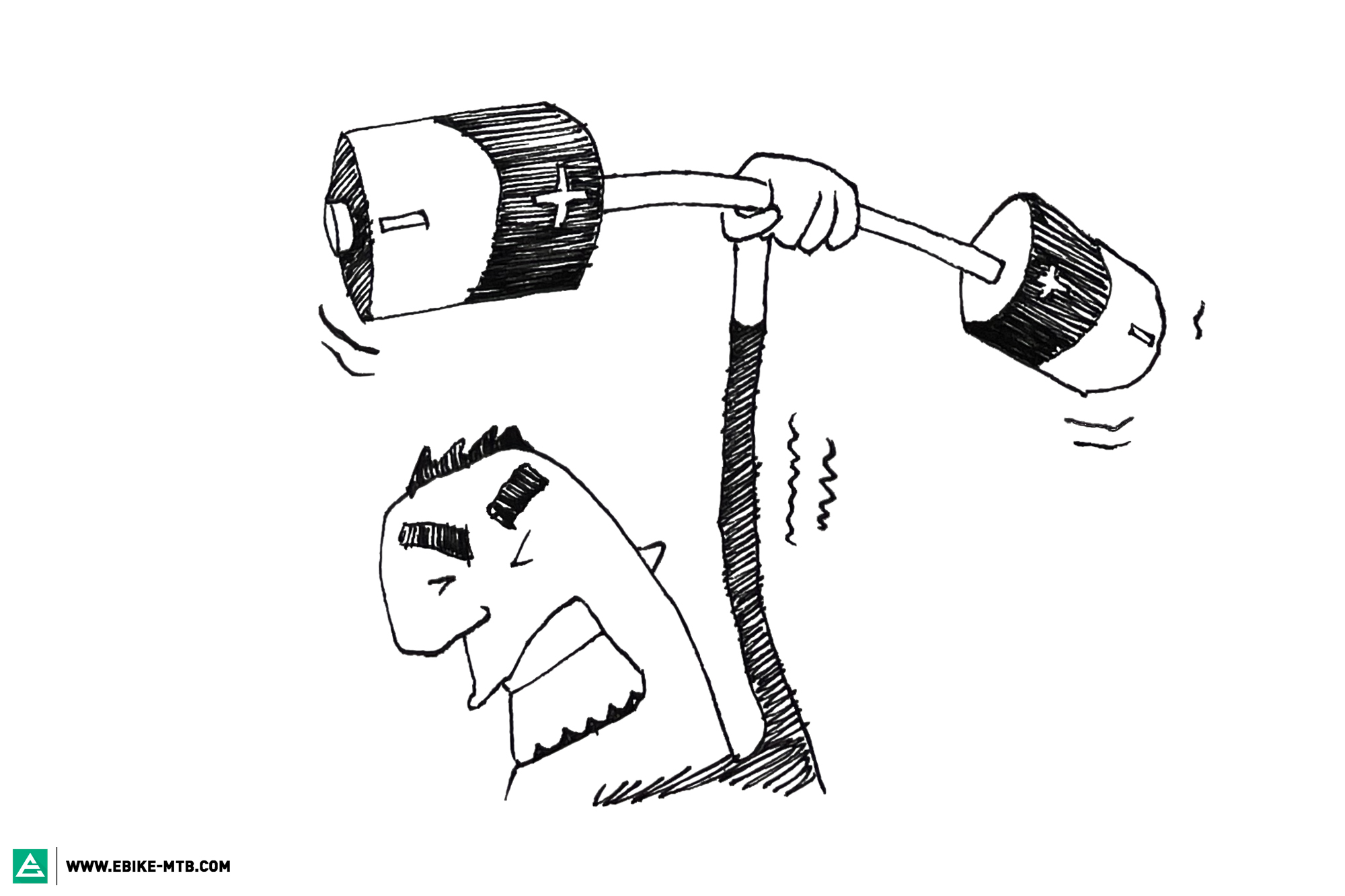
Full-power eMTB motors
Full-power eMTB motors currently make up the majority of the motors available on the market. First and foremost, they’re characterised by their high power and torque output, as the name suggests, usually capable of putting out around 85 Nm or more. The torquiest motor represented in the test, the Panasonic GX Ultimate Pro FIT, has a specified output of 95 Nm, making it the powerhouse in our eMTB motor comparison. However, different full-power motors can feel completely different on the trail – that’s because the motor software also has a lot to say about how the power is delivered.

Minimal-assist eMTB motors
Minimal-assist motors are characterised by less power and less torque, generally accompanied by a more compact design and lower weight than a full-power system. The TQ HPR50 motor in particular can be integrated into the frame almost invisibly. The models represented in the test are capable of generating between 50 and 60 Nm of torque and are usually much more compact than full-power models. They also produce a lot less power, though some minimal-assist motors like the Bosch Performance Line SX or the FAZUA Ride 60 are almost on par with full-power motors in terms of maximum power output. Minimal-assist motor systems promise a more natural ride feel and handling on both the ups and downs. Note: the battery concept and the integration of the system ultimately determine how light and agile the bike feels. You don’t necessarily need a minimal-assist motor to create a light eMTB. ROTWILD, GIANT, and Orbea offer light eMTBs that rely on full-power motors paired with small, lightweight batteries. Likewise; motors like the Bosch Performance Line SX are almost predestined to be combined with larger batteries.
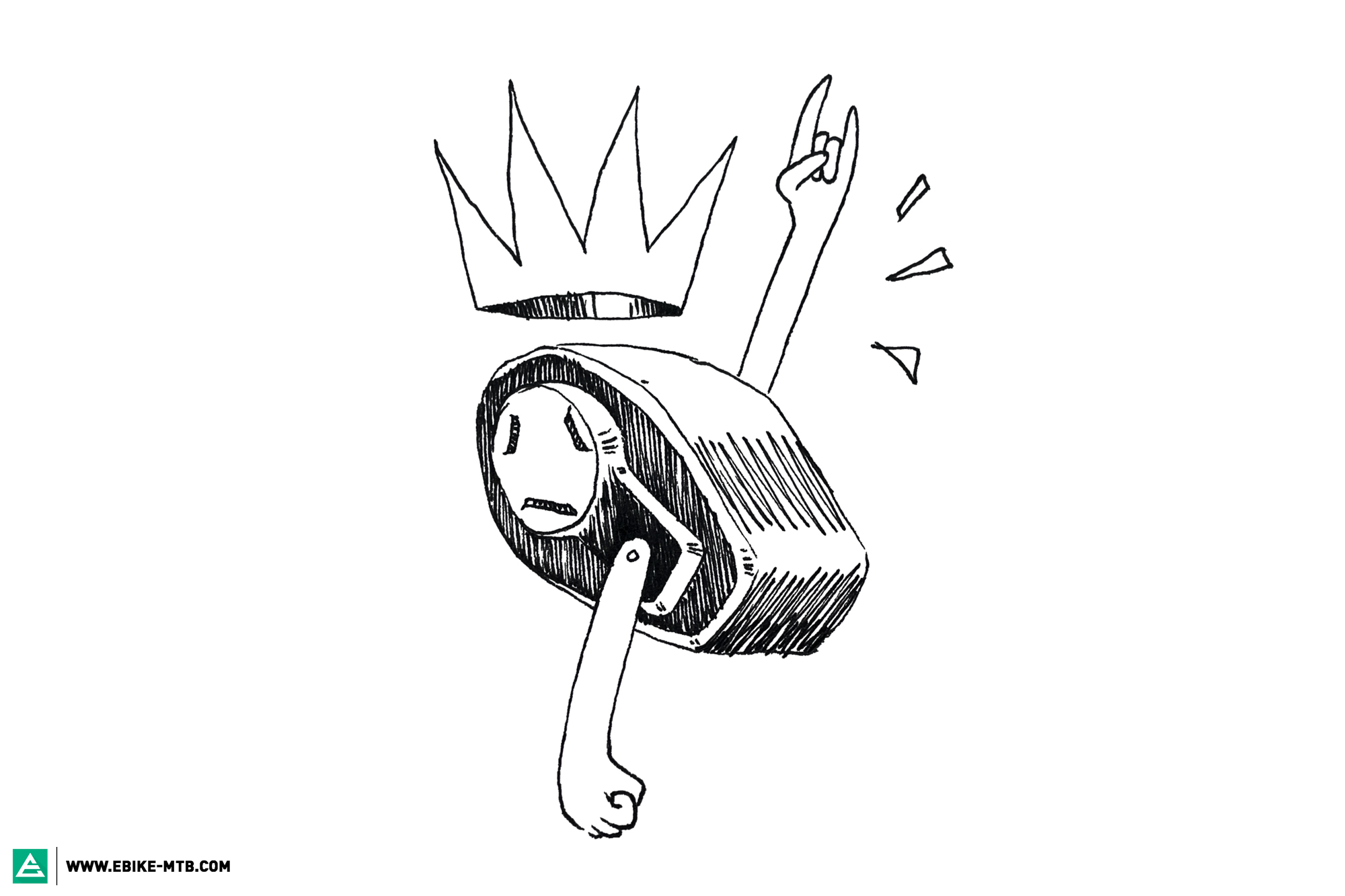
Behind the Scenes: How we tested the eMTB motors on the trails and in the lab
Our E-MOUNTAINBIKE test crew has tested an incredible number of eMTB motors in a wide variety of bikes over the past 10 years, accompanying the development of eMTBs from the very beginning. Accordingly, we’ve gained a wealth of experience over the years, which we were able to and did draw from during this eMTB motor comparison. At the time of testing, for example, we had already ridden the Bosch Performance Line CX motor in over 50 different bikes. We had also tested the still very new TQ HPR50 in 7 different bikes by that time. For a different perspective, we handed all the motors on test over to the renowned Velotech test laboratory in Schweinfurt, Germany, to compare our real-world impressions with lab results. As such, our test procedure was divided into a practical component with a large group of test riders from all walks of life and skill levels, and a theoretical component with the motors undergoing a range of lab tests.

Real-world tests – The most crucial part
To get the most comprehensive review of each system in our eMTB motor group test as possible, we compared the motors head-to-head on our predefined and diverse test track, adding our findings to those we’ve already gathered on various test bikes around the world. That way, we were able to accurately identify even minute differences between the eMTB motors. In preparation for this, we ordered 15 sets of MAXXIS tires, in order to rule out the biggest variable in terms of rolling resistance and traction – the tires. All our test bikes were set up the same way. Our test loop included everything an eMTB’s heart desires: gravel paths, steep chutes, a mix of flowing and technical climbs; up steep ridges, through deep ruts, and down steep drops, as well some stretches of tarmac, because life isn’t just about loam. The eMTB motor systems weren’t spared on the descents either. And we didn’t stop at just testing the riding characteristics – we also focused on connectivity, pressing all the buttons, sliding all the sliders and twisting all the dials in the various tuning apps, using the navigation functions, and connecting other accessories. Our aim was finding the optimal settings and exploiting the range of each setting to the full. We’ve rarely had so many emotions so close together while conducting our tests, including everything from amazement and enthusiasm to frustration and disappointment.

Lab tests – The nerdy part
After successfully learning all the terms in our glossary, now comes the experimental part with a few lessons in physics: the laboratory tests. We were able to do this at the renowned Velotech testing laboratory based in Schweinfurt, Germany. Velotech are a globally recognised and accredited test laboratory in the field of micro mobility, led by Managing Director Marco Brust. Everything can be tested here: from luggage racks according to DIN EN ISO 11243, to our 13 eMTB motors. Their customers include big names from the eMTB industry, such as Bosch and CUBE. We occupied the lab at Velotech for more than three weeks, sparing no expense or effort in pursuit of the ultimate eMTB motor comparison.
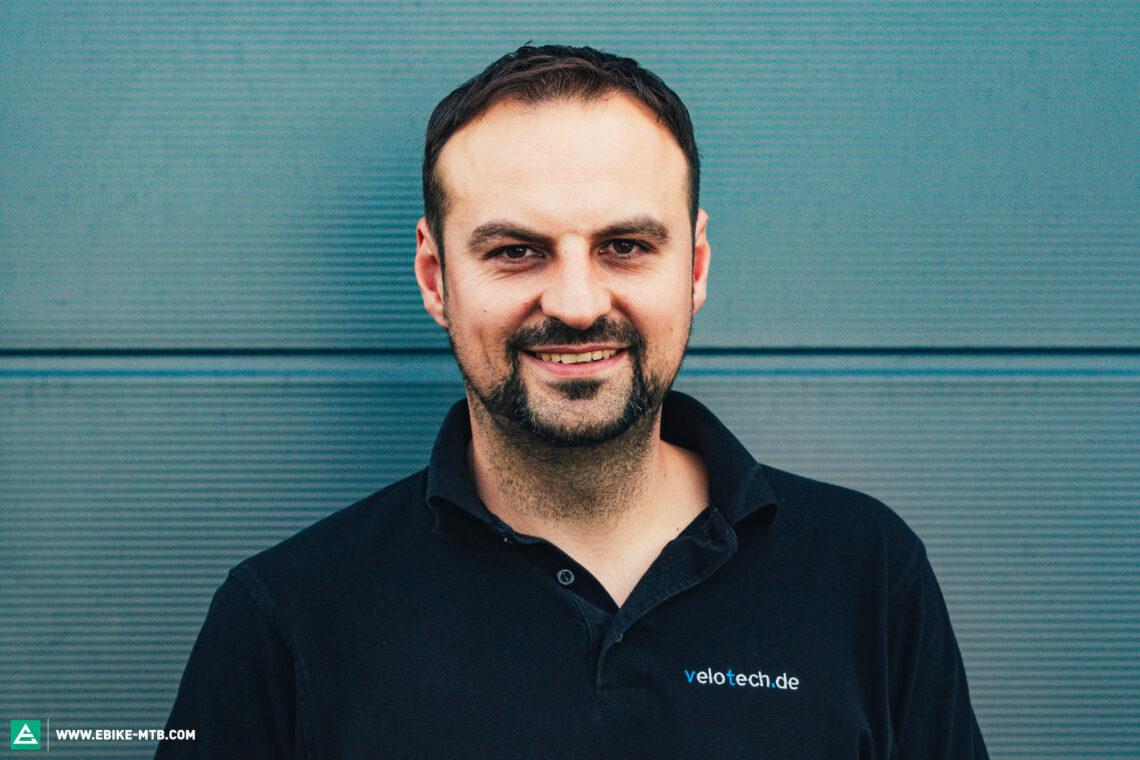
To get as much information from the laboratory tests as possible, we measured both the electrical power and the mechanical power curve of each motor, i.e. how much current the motor draws from the battery during operation, and how much of that energy arrives at the rear wheel in the form of mechanical power, minus all losses. We did so at different cadences and differing levels of rider input. The collected data allows us to analyse the eMTB motors’ effectiveness at different cadences, including power delivery, torque curve, efficiency, and any software-based restrictions. The result was about 800 data points per motor, filling acres of spreadsheets. We also conducted range tests to collect further data – but there are too many variables that influence the range for us to be able or willing to publish any kind of general ranking for the various motors on test.
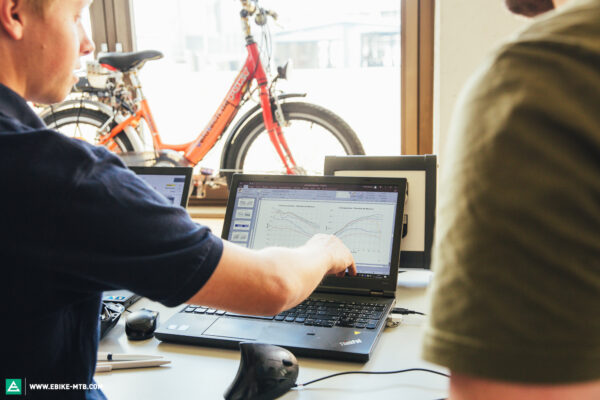

An eMTB motor can churn out great values on the test bench but still not perform accordingly on the trail, since even 800 data points can’t represent reality.
Even if everything always sounds nice and scientific in the laboratory, reality often looks very different – usually much messier. Therefore, you must always use lab values with extreme caution. Ultimately, what matters is what you can feel and what is relevant on the trail. Especially in the case of eMTBs, the factors influencing the ride feel are incredibly complex and vary greatly. This is more noticeable than with cars, where the drivers and their personal traits and characteristics have a much less significant influence on the handling than riders do aboard their eMTBs. Effectively, eMTBs are man and machine hybrids, and therefore they must always be viewed and tested as such. An eMTB motor can churn out great values on the test bench but still not perform accordingly on the trail, since even 800 data points can’t represent reality. After all, we’re not here to play a game of Top Trumps, we’re here to ride bikes! Just because a motor has a little more torque or power doesn’t necessarily mean it’s better, or that it will actually help you conquer a technical climb more easily, so instead of showboating with impressive graphs that only reflect half the truth, we used the most important and relevant lab results to substantiate our individual reviews within the appropriate context.
The laboratory test procedure
There are different ways to test motors. For us, there was just one option worth considering: to test the motor system as a whole, i.e. in a complete bike, because that is the most realistic. And we were able to do just that at Velotech! Below, we’ve outlined the lab test procedure for all the nerds amongst us.
To prepare for the laboratory tests, we fitted all bikes with control tires running identical pressures, checked the drivetrains, and lubricated the chains. As a result, the energy losses incurred by the rear wheel and drivetrain should be similar. Then the bikes were clamped to a test rig, which looks a little bit like a large, industrial roller trainer, with a roller resting on the rear wheel. The cranks are turned by an external motor, with a continuously variable speed and power. The speed and power of the external motor simulates the rider’s pedalling power and cadence. Drivetrain losses and rolling resistance can be calculated and accounted for by pedalling the bike with the motor switched off at a certain input power and then measuring how much of that power is transferred to the roller. For practical purposes, however, it’s important to understand that the actual mechanical power put out by the rear wheel is what counts.
First, Velotech project manager and physicist Florian Edelmann helped us determine the power and support ratio of the motor. To do so, the pedals were turned at a fixed cadence while simulating a linearly increasing rider input power, allowing us to measure the electrical and mechanical power. We also had the motors in our eMTB motor comparison set to the highest support mode. Why? Only the highest mode is comparable, because this is where the motor performs at its maximum. All other modes differ from manufacturer to manufacturer, or may be tuned by the bike brand, and therefore don’t allow for an accurate comparison. In addition, the various modes offer numerous customisation options, which makes them even less comparable. The power curves we obtained during this test provide information on how much the electrical and mechanical power output increases, what the ratio is between rider input and motor output, how many watts of rider input are needed for the motor to unleash its maximum power, and, finally, at what power it reaches its limit.

As we learnt in the glossary, a motor’s performance and efficiency are heavily dependent on the cadence. So we did a second test run, in which we tested with a specific, constant rider input power and an increasing cadence. For this, we set the rider’s power quite high at 250 watts, because the previous test showed that every motor unleashes its full power by this point – especially the motors with low support ratios. To cover the complete spectrum for our eMTB motor comparison, we started with a low cadence of 20 revolutions per minute and then gradually raised it to a maximum of 120 RPM, both of which are extremes at which hardly anyone pedals in reality. While doing so, we again measured the electrical and mechanical power. The results show how much the respective performance depends on the cadence. In other words, at which cadence the motor unleashes its maximum power, is most efficient, and at which cadence the power starts tapering off. In addition, it allowed us to detect the influence of the software: like whether the manufacturer even wants the motor to generate maximum power at a comfortable cadence or whether full power is reserved for those who are willing to put in the effort themselves. We repeated this test with a rider input power of 150 watts, which corresponds to the average power of a relatively fit rider. This test allowed us to draw various conclusions, such as whether an average rider can even manage to call up the motor’s maximum power (without pulling a muscle in the process), and whether riders would perhaps get the same performance from a smaller, less powerful motor without carrying the added weight of full-power models? Finally, which motor provides the most assistance if you want to take it easy yourself?
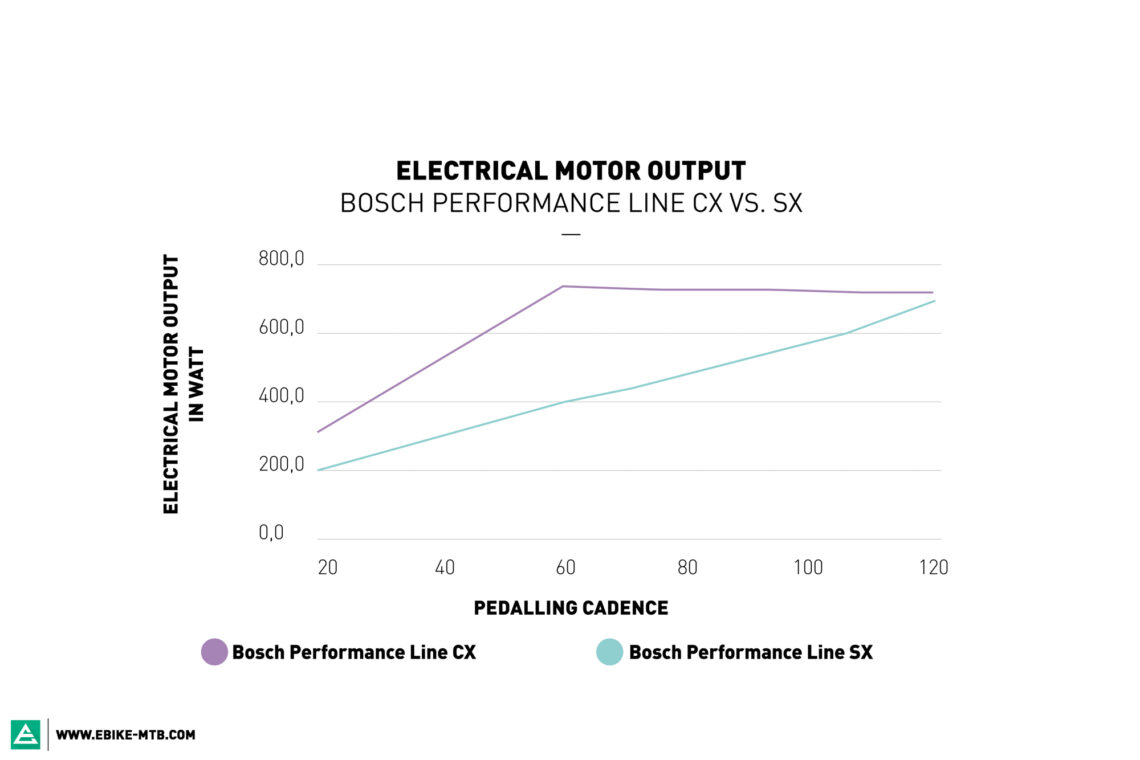
Details and features: What to look for on an eMTB motor
We already know that choosing the right eMTB system is about far more than the motor’s performance specs or battery capacity. Rather, the overall concept of the eMTB and motor system must suit your intended use and requirements. Nevertheless, there are numerous details and features on the various system components that you should look for.
Which eMTB displays and remotes are right for you?
Just as the grips and pedals serve as the contact points between the rider and the bike, the remote and display are the interface between the rider and the motor system. Depending on the manufacturer, you’ve got a wide range of options: from off-the-shelf products supplied by the motor manufacturer, to in-house solutions from bike brands, and third-party products, such as those from system integrators FIT. Top dogs Bosch now offer a whole range of displays and remotes.
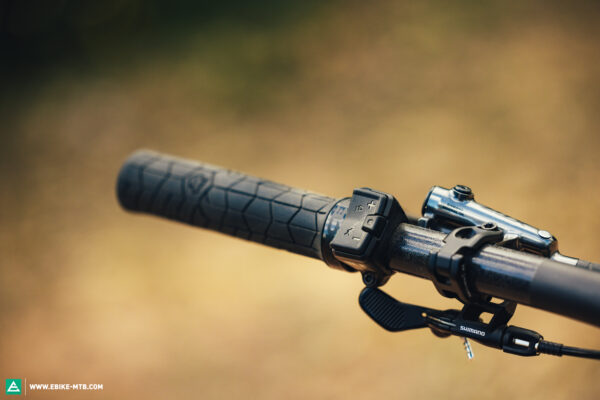

The eMTB motor remotes – Push the button
A remote is either your thumb’s best friend or greatest enemy. How friendly or antagonistic the relationship between your thumb and the remote turns out to be depends largely on your subjective needs and expectations. The range of remotes that we’ve fondled is correspondingly wide: including everything from clunky remotes with enough buttons to control a space shuttle, to incredibly minimalistic little levers.
While the minimalist approach usually offers simple operation and an unobtrusive look, extensive remotes usually provide more functions. In the latter case, there’s often just one function assigned per button, and menu items on the display can usually be accessed more directly. They also stand out more on the handlebar and can interfere with the brake and dropper levers, depending on the design. Ergonomics also play a role here, because what good is the best remote if you can’t reach it, or only reach it by contorting your hand? Particularly large remotes, like the Bosch LED Remote or the FIT Basic Remote, stick out further from the handlebar than the minimalist remotes from TQ and FAZUA, for example. As a result, you must lift your thumb further away from the grip and press the buttons at an uncomfortable angle. While touring riders have fewer problems with this, it’s especially uncomfortable to remove your thumb further from the grip than absolutely necessary when you’re on the trail – whether you’re riding up or downhill. Remotes with lots of buttons also increase the chances of hitting the wrong button when riding over bumpy terrain, which is a problem you won’t have with small remotes that have just two or three buttons.
The haptics and feedback of the buttons also differ greatly between the different models and brands. While you can never be quite sure whether you’ve actually pressed the buttons on the Yamaha Remote because they have almost zero play, the FIT Basic Remote even provides vibration feedback. In general, a well-defined engagement point with a noticeable amount of smooth play before it, like you get from the Shimano EM800-L remote, feels most natural. Systems that are capable of emitting sound, like that of Specialized, provide additional feedback on the respective action.


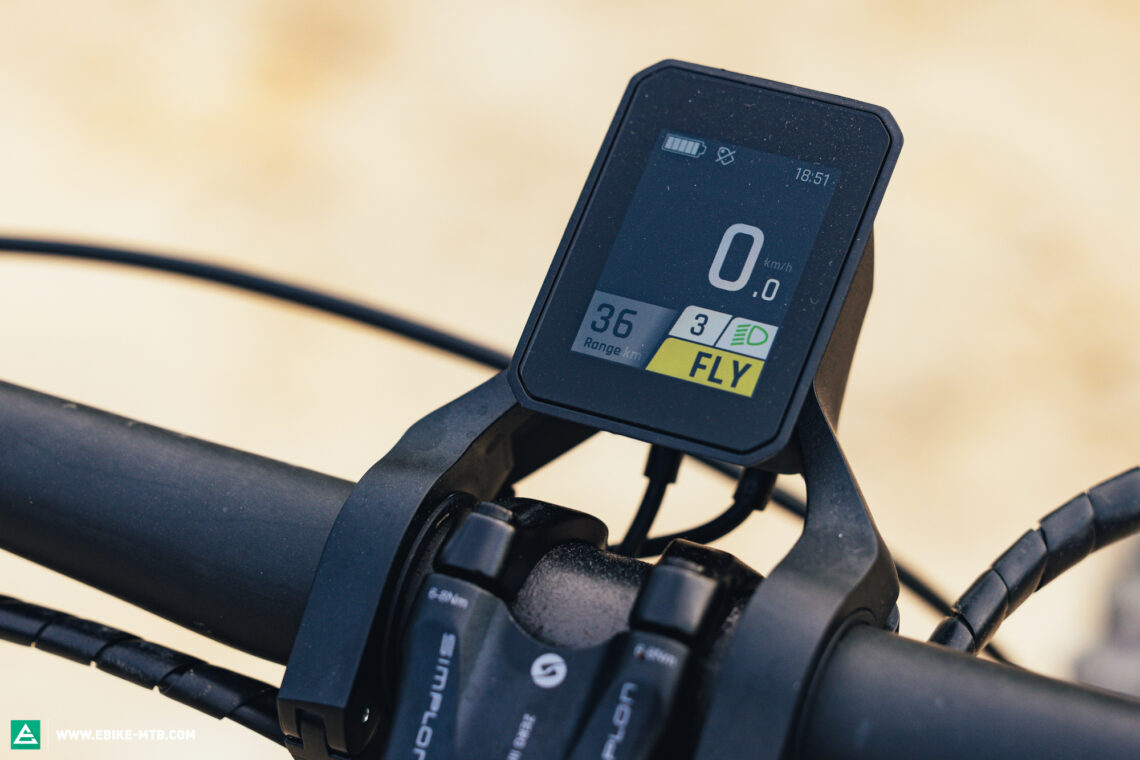
The displays of eMTB motors – A simple LED or a flat screen TV?
The same applies to displays as to remotes: they’re available in abundance. Large colour displays, small colour displays, integrated displays in the remote, LEDs… You get the drift. Depending on the manufacturer, however, the different variants can be better or worse. TQ manage to provide all the necessary information via a minimalist black and white display in the top tube, whereas Yamaha provide just two rows of LED lights in a chunky block on the handlebar.
With the displays, you must ask yourself how much information you need while riding and how much information you can do without for the sake of a cleaner look and more intuitive operation. Trail-shredders that frequent their home trails will be fine with a minimalist combination of a small remote and a type of battery level indicator, like the Bosch System Controller or the FAZUA LED display. If, on the other hand, you require navigation aboard your eMTB and love having access to a wide variety of riding data on the go, you should rather go for a large, feature-rich display. But beware, displays can be a distraction while riding! Besides the type of display, its position is crucial, too. A display that’s mounted in front of the stem remains easily visible while riding, albeit exposed in the event of a crash, and it makes your bike look like a unicorn. The Brose display integrated into the remote offered one of the cleaner looks in our eMTB motor comparison. One of its disadvantages is that it interferes with the brake lever and, above all, the system start button is positioned unfavourably between the display and the brake lever. For trail riders, integrated displays in the top tube are the most elegant solution, as is standard with TQ, FAZUA and Specialized.
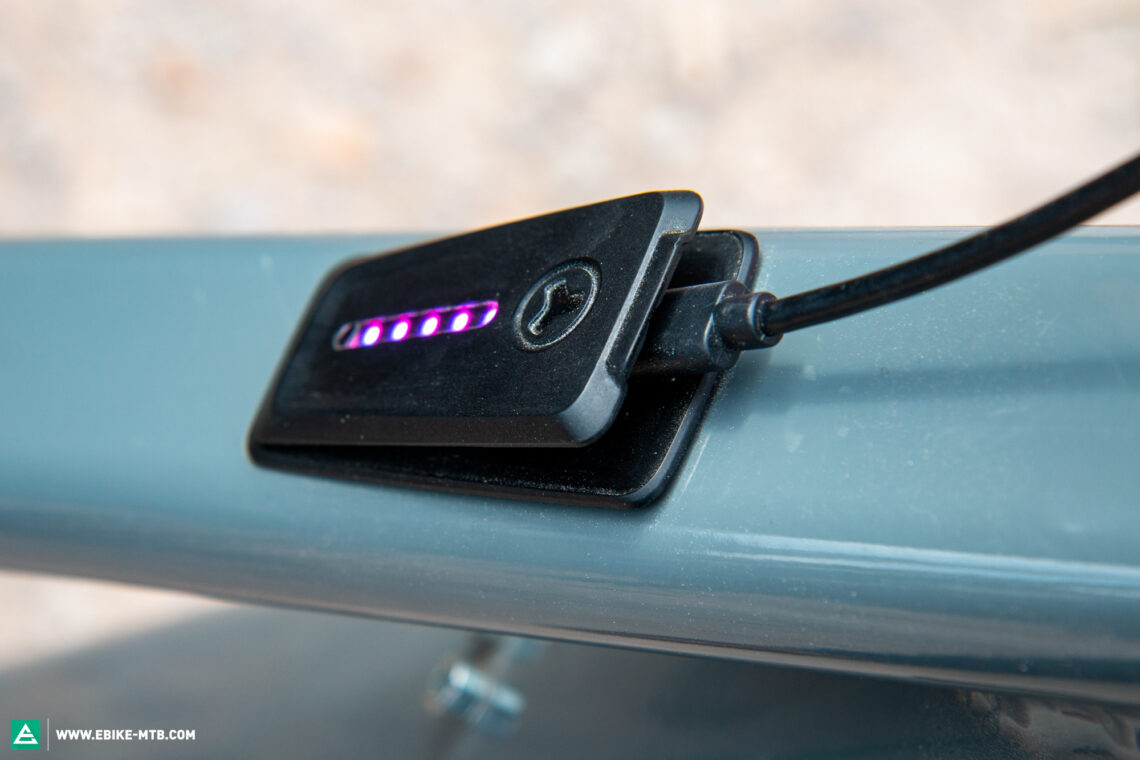
Charging options for smartphones and other gadgets aboard eMTBs
Whether it’s a smartphone or GPS bike computer, both tend to run out of battery just when you need them most. All the better then that many eMTB motor systems offer integrated charging options, so you can charge your devices even when you’re on the go. However, you shouldn’t completely rely on this either, because often the charging power is just enough to prevent your smartphone battery from running dry while you’re using it to navigate. So, heading out the door with your smartphone battery at just 5% won’t get you very far even with a charging option on your ebike. The position of the charging port plays a major role here, too. You want it close to the head tube, in which case a short cable will suffice to charge your Garmin or smartphone while attached to the stem or handlebar. FAZUA have cleverly integrated a USB-C charging port under the LED display, where it’s within easy reach but well hidden and protected from the elements.
E-mountainbike motor apps – Frustration or joy?
All motors in our eMTB motor comparison have an app, providing a useful interface with the system. Since these offer a wide variety of approaches and solutions, the question is: what should a good app be capable of? First, it must establish a connection between your smartphone and the eMTB system quickly and easily. Nothing is more annoying than having to jump through hoops or wait forever for the app and your bike to establish a connection. Bike computers or watches can also serve as an interface to the eMTB system, giving you access to additional information – particularly if you’re using a very minimalist display. Moreover, a good app should always allow you to tune the motor characteristics and customise the support modes. But more on this later.
Over-the-air software updates are a cool feature to keep your eMTB up to date. Systems that don’t yet have this capability can only be updated by plugging the bike into your laptop or taking it to a dealer, which is a hassle. All these functions, if properly implemented, already make a good app, providing everything you need. It’s also important that it takes just ONE app, so that you don’t have to switch between several apps for different functions or install other apps or add-ons to establish a connection.
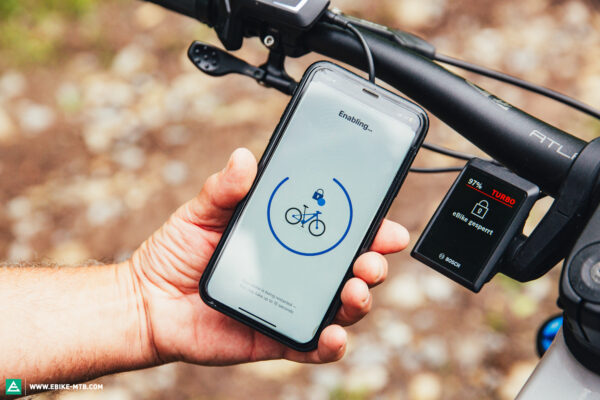
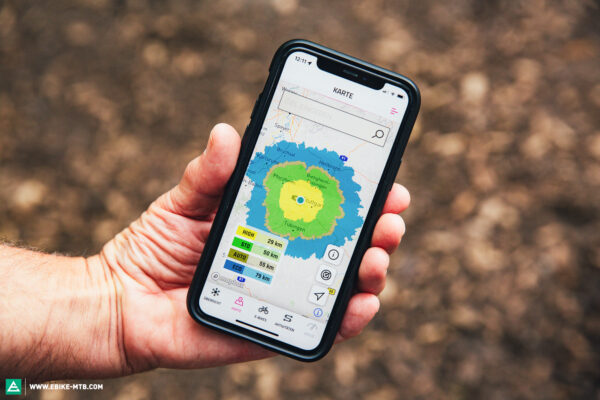

In addition to these basic functions of a good app, some manufacturers offer additional features that, if implemented well, can expand the range of functions significantly. Navigation that includes an estimate of the range based on the route, its elevation profile, and the motor’s energy consumption can be immensely helpful when planning your route. At best, these work in combination with turn by turn instructions on the display. Being able to link it with platforms like Komoot and Strava is another great option, allowing you to directly synchronise your routes and ride data. Fun stats can also be a hit with your buddies during a post-ride beer. For example, Specialized track your Jump stats, telling you how much time you spent in the air during a ride. That way you can quickly put an end to the discussion about who collected the most airtime. The Bosch eBike Lock function and the Specialized System Lock provide added peace of mind in day-to-day life when leaving your bike parked outside or stopping for refreshments after a long day in the saddle. These functions let you disable the motor in the app, so thieves can’t just ride away with your bike in Turbo mode. However, it’s only the motor that’s disabled, so the eMTB can still be ridden like an analogue bike. Bosch go one step further with the ConnectModule: it allows you to track the location of your bike via the app, and can emit an alarm when the bike gets moved. However, you also need a paid subscription to unlock the function in the Bosch eBike Flow app.
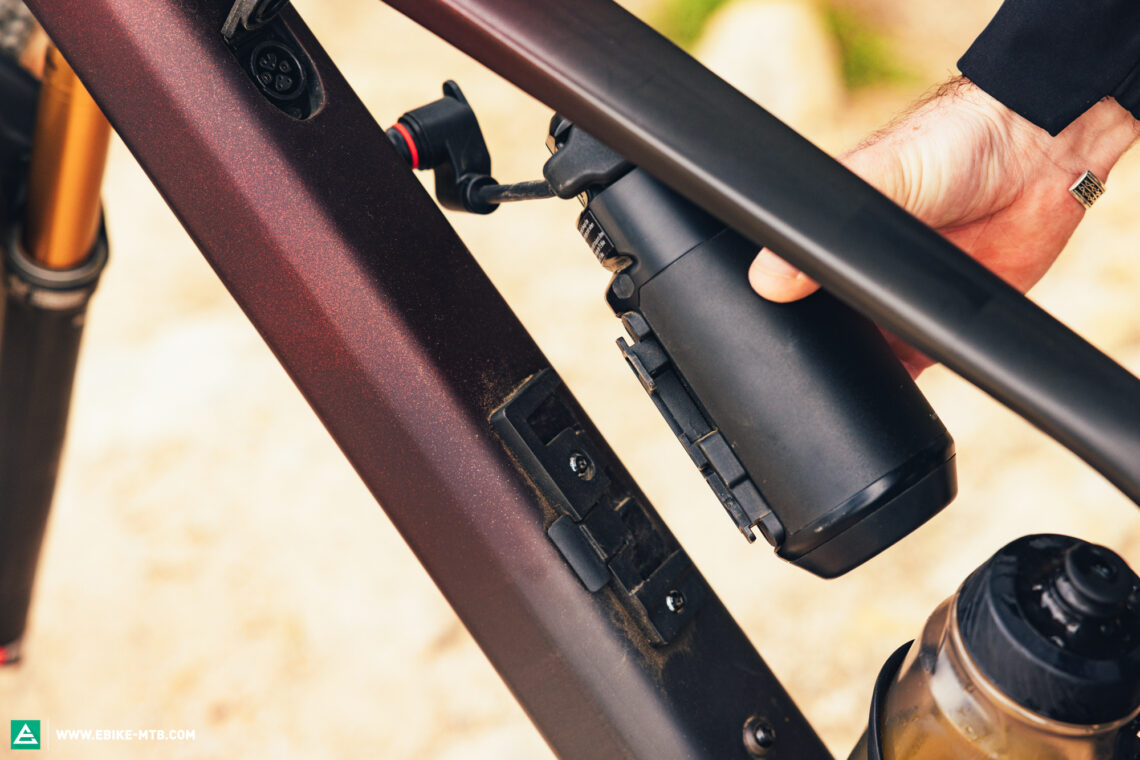
The different riding modes of the eMTB motors and their customizability
Linear or dynamic e-mountainbike support modes?
The motor manufacturers on test offer three to five different support modes as standard. In principle, the support modes can be divided into two categories, according to the type of support: dynamic and linear. Dynamic support modes adapt to the riding situation. This means that the motor adjusts its support depending on the incline, cadence, or force applied to the pedals. Dynamic support modes promise a natural ride feel on level terrain, where little support is needed, while letting the motor kick into high gear when you need it most, like on a steep, technical climb. By now, most high-quality motor systems come with one or more dynamic modes, with the most well-known probably being Bosch’s E-MTB mode. Linear modes, on the other hand, do not adapt the eMTB motor’s output according to the input or riding situation. Thus, they offer a fixed support ratio at which the support increases linearly with increased input.
Customizability of the ebike motor support modes
Most eMTB motor manufacturers allow you to customise the various support modes via an app. The adjustability varies greatly between the different motor systems. Some manufacturers, like Brose, offer just one dial per support mode, allowing you to adjust the intensity of each mode. With the Micro Adjust function, Specialized let you do this directly via the remote, even while riding. Other manufacturers take it a step further still. With Bosch, the support and the dynamics of all modes can be adjusted from -5 to +5 in the eBike Flow app. In other words, it’s not just the intensity of the support that you can adjust, but also how it kicks in. In addition, you can set the maximum speed up to which a mode offers support, and the maximum torque. Specialized follow a similar path, allowing you to adjust four parameters in every support mode. The manufacturers in our eMTB motor comparison also showed differences in the extent to which the modes can be adjusted. Bosch have a predefined framework within which adjustments can be made. Brose, on the other hand, let you drag the adjuster from 0 to 100 in any mode, so you can turn Eco mode into Turbo mode and vice versa. The FAZUA system is similarly unrestricted, even allowing you to configure entirely new personalised modes. Shimano take it to a whole other level. Their Fine Tune mode gives you the option of configuring up to 15 individual support modes. It’s not just in their range of functions that the manufacturers differ, but also in clarity and user-friendliness. Regarding custom support modes and fine tuning, it’s up to you to decide how far you want to dive down this rabbit hole, or whether you’d be happy with the existing modes as they are and prefer to spend your time on the trails instead of fiddling with dials on a screen.
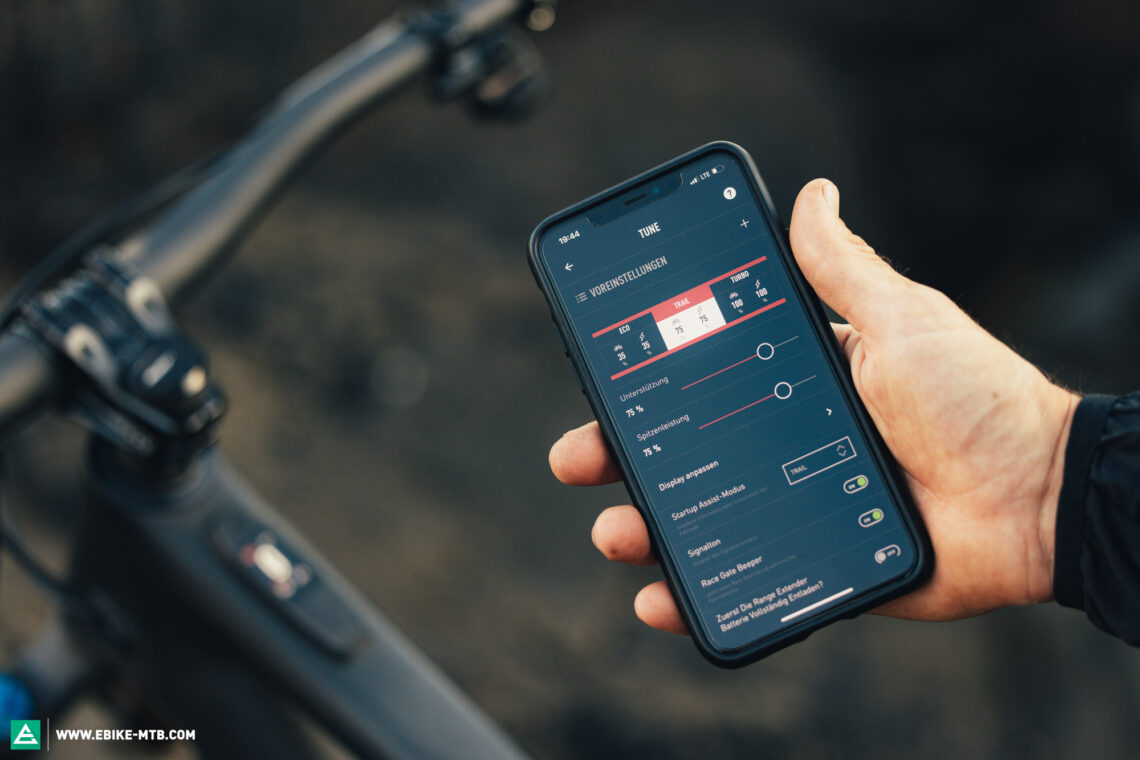
E-mountainbike batteries – An overview of battery concepts
Basically, the battery concepts of the manufacturers can be categorised as monolithic or modular. The classic configuration is monolithic, where you’ve got one battery integrated on the bike, serving as your only power source. Most of the integrated batteries in the down tubes are removable, which offers advantages when transporting the eMTB, and allows you to take the battery indoors for charging. However, there are big differences in the battery covers and locking mechanisms used. Other batteries are permanently integrated, meaning they can’t be removed. With a modular system, the battery capacity can be expanded. This is done with range extenders – external batteries that attach externally to the frame and plug into the charging port. Range extenders vary in size from manufacturer to manufacturer, but they always function as an extension of the main battery. They usually attach to the bottle cage or a specially designed bracket, and connect to the main battery. The advantage of a modular system is that you can expand the battery capacity as needed. If you typically ride shorter routes and get along well with a smaller battery, but don’t want to miss out on longer rides at the weekend, you can simply up the capacity with a range extender and off you go. As a result, you don’t have to carry around unnecessary battery capacity and therefore weight on your post-work jaunts. In our eMTB motor comparison, the minimal-assist motors from TQ, Specialized, and Bosch all have the option of a range extender, but so do the full-power systems from GIANT and Pinion. In theory, some motors such as the Specialized SL 1.2 and the Bosch SX, can be powered solely by a range extender, without the main battery.
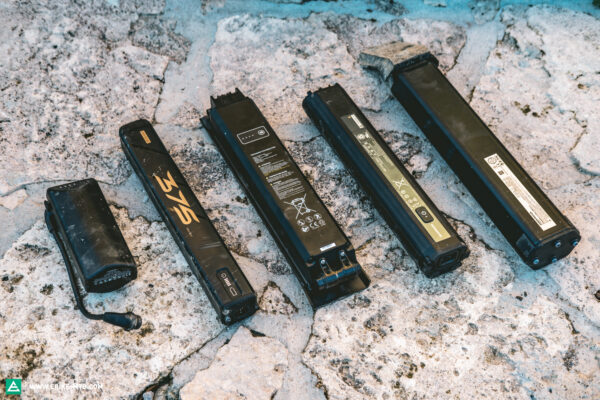

The bigger the eMTB battery, the bigger the range?
Well, yes and no… In an identical scenario with the same motor, rider, bike, and terrain, you will get further with a larger capacity battery, of course. However, if you’re choosing between two bikes and consider the battery capacity as your only reference point for the range, you’re bound to reach false conclusions. In reality, the range depends on a myriad of factors, the biggest of which being your weight and riding style. Many people approach the topic of range on an eMTB like they do with a car, asking how far they can get with a given battery capacity. They often forget that eMTBs have more significant variables to contend with than a car. If you replace the driver in a car with one that weighs twice as much, the difference in fuel consumption is minimal, since the driver makes up an insignificant proportion of the total weight. On an eMTB, however, the rider accounts for the majority of the total weight. Therefore, you should always take your own weight into account when choosing the battery size. The car analogy also works well when thinking of riding style. If you’re always driving with your foot to the floor – riding in the highest support mode – you’re going to have to refuel – recharge – a lot sooner.

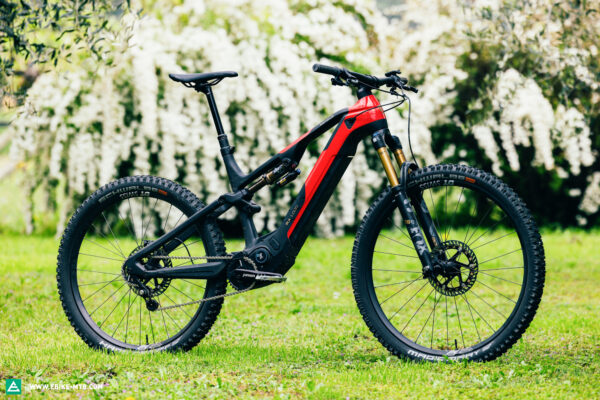
The motor itself also has an influence on the range, because every motor has a different power output. Those who studied the glossary will know that motors also differ in efficiency and power consumption. A weak motor with a small battery can take you just as far or even further than an inefficient full-power model with a large battery. Added to that are the energy losses incurred by the bike. Depending on the pressure, rubber compound, and tread pattern, tires have a big influence on range. You shouldn’t neglect the effect of the outside temperature, wind resistance, and the drivetrain friction either. As you can see, there is a lot to consider here.
What is the right battery capacity for you?
Many eMTB riders believe that it’s better to have more than you need, than find yourself needing more than you have. However, instead of blindly betting on the biggest battery, you should ask yourself: How, where, and for how long do you want to ride? And what size battery would you need for that? You can find a detailed treatise on the spectre called range anxiety here. If you typically go on quick and intense post-work rides, you’ll usually be served better by a smaller battery. That way you don’t have to carry around the unnecessary weight that would come with a bigger battery. If, on the other hand, you live in the Alps, where the climbs are always long and steep, or if you enjoy riding extended loops, you will fare better with a bigger battery, offering a larger capacity. You should always keep your own weight in mind, too, because that has an outsized effect on the range. Particularly light riders can happily go for the smaller battery, whereas the heavy-hitters amongst us are better served with a bigger battery.
According to our reader survey of over 12,000 eMTB riders, 49% of you mainly ride 30 to 50 km routes. A further 30% of our readers typically ride routes that are between 10 and 29 km long. In that case, you can rest assured that the standard battery capacity will suffice – especially in combination with the fact that 30% of you tend to stick to the lowest support mode anyway. By the way, those who predominantly use the lowest support mode and don’t cover long distances shouldn’t have any problems with a light eMTB. In the highest support mode, these offer as much assistance as a full-power motor in the lowest or even the medium mode, and you benefit from having a significantly lighter bike. Besides, eMTBs are still bicycles and even if you drain the battery, you will be able to ride on and get home, nonetheless – you’ll just have to pedal harder.
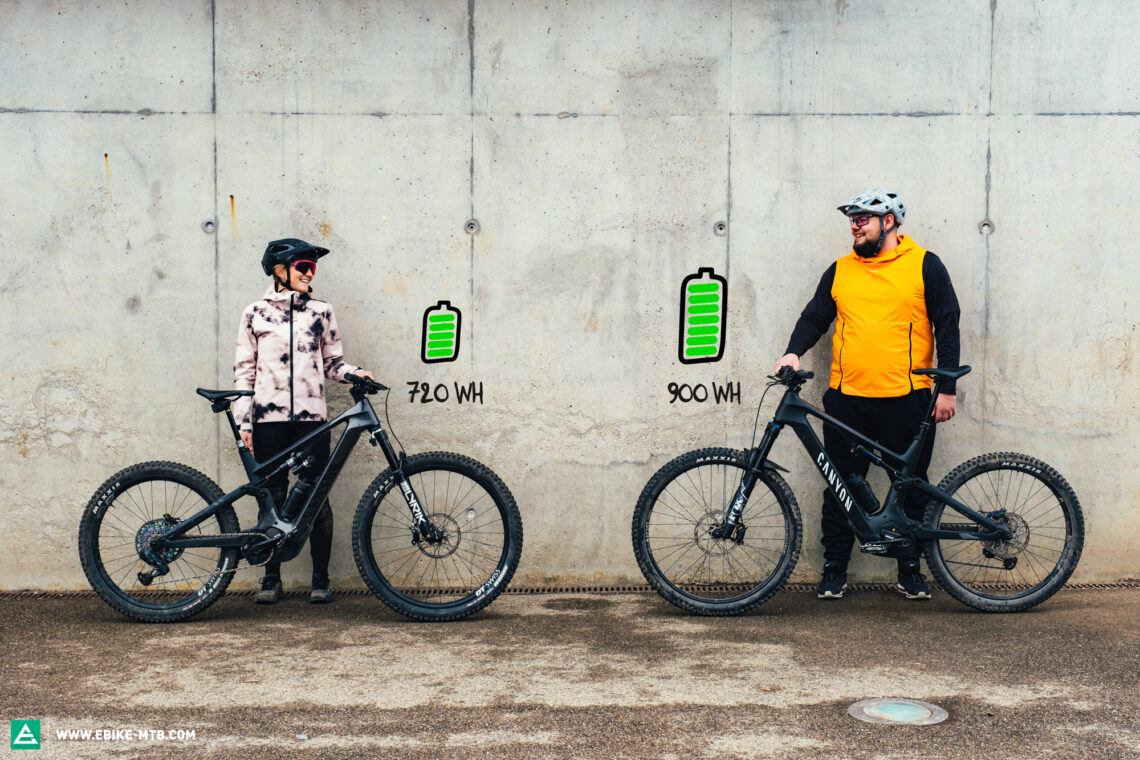
Meanwhile, motor manufacturers and bike brands have also jumped onboard and are increasingly giving you the choice between different battery sizes. Some bike brands have online configurators that let you choose the size of the battery along with the remaining components of your dream-build. Alternatively, you can resort to one of the modular systems explained above, allowing you to extend the capacity of the main battery with a range extender. That way you can use the small main battery on your day-to-day rides but still have the option of tackling long rides without range anxiety by plugging in the range extender.
In addition to the battery size, the handling of the battery is another important point to consider when choosing which battery concept suits you. In particular, whether or not you can remove the battery. If you’ve got the option of charging your bike where you park it, like in the garage, a non-removable battery can do the job. However, it’s a different story if you don’t have a power outlet, and need to take the battery indoors to recharge. In that case, a permanently integrated battery means you’ll have to lug your entire bike into your apartment every time the battery needs recharging. This is particularly worth thinking about if you’re planning some multi-day tours – your hotel might not appreciate you dragging your muddy eMTB up the stairs to charge in your room. If the battery is removable, you can leave the bike outside and just take the battery inside or wherever it’s most convenient to recharge. Whether the battery is removable depends on the motor system and the bike.
E-mountainbike battery durability – Lifespan, charging cycles, and storage
Manufacturers merely provide indications of the lifespan of eMTB batteries. Each battery has a specified number of charging cycles after which a certain % of residual capacity remains usable. That said, this information only serves as a rough guideline, and it’s difficult to prove or grasp in realistic terms. However, as a general rule of thumb, it can be said that bigger batteries should have a longer service life. On the one hand, this is simply because larger batteries don’t need to be charged as often – fewer charging cycles mean that the cell chemistry of the batteries is less affected. On the other hand, the bigger capacity allows you to keep the state of charge ranging between 30% and 80%, which is gentler on the battery. That said, no eMTB battery is exempt from wear and tear, unfortunately. Depending on the manufacturer and battery, the number of charging cycles that a battery will put up with varies. In most cases, however, you can expect to get between 500 and 1,000 charging cycles. If you ride your eMTB three times a week, fully draining and recharging the battery every time – that is, one full charging cycle per ride – the battery’s service life is just over 3 years, assuming the worst-case scenario of 500 charging cycles. However, even if this were the case, most batteries still have a decent amount of usable capacity remaining. In addition, the battery service life can be prolonged with the appropriate care: if you only recharge it halfway, you only use half a charging cycle. Furthermore, the storage of your battery also determines the speed at which it deteriorates. E-mountainbike batteries don’t like getting very hot or cold, with the ideal temperature ranging between 10°C and 20°C, so it is best not to store the battery in the garden shed when you’ve got frost or very high temperatures. If you’re not going to use your eMTB for a long time, like in the winter, make sure that the battery level doesn’t fall below 30%. Batteries don’t like being stored almost empty. While this is good general advice, you should always try to follow the manufacturer’s recommendations on storage and charging of your particular battery.
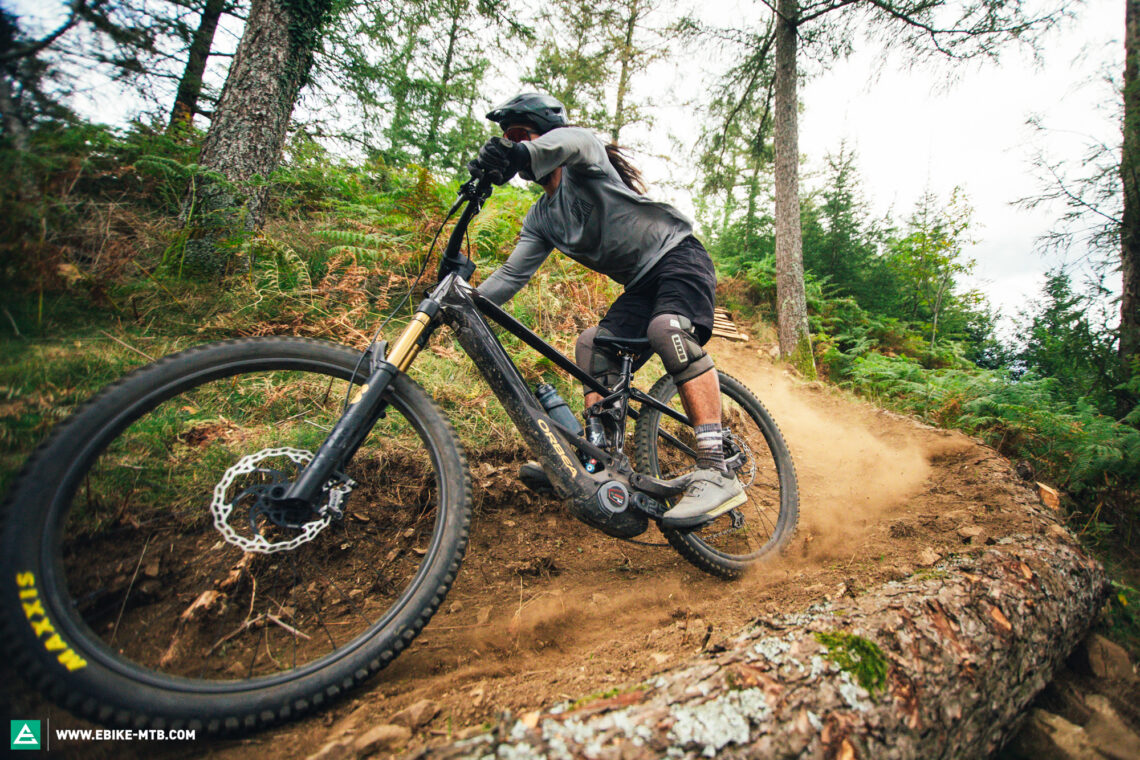
Motor noises on an eMTB – Not just a question of sound, but also of the riding experience and perception of quality
E-mountainbike motor noises don’t just affect how loud you need to speak while chatting to your buddies on the trail, but also the riding experience as a whole and your perception of the bike’s quality. With quiet eMTB motors, you can feel like you’re hovering, whereas louder models will feel more like a cheap electric motorcycle (or a cool space shuttle, depending on the sound). The noise level varies massively depending on the motor and the situation. The TQ HPR50 motor is barely noticeable in many situations, for example, while the significantly more powerful Pinion MGU E1.12 eMTB motor wakes up the whole forest, especially in the lower gears. With most motors in our eMTB motor comparison, the volume increases with increasing speed and support. The exception to this rule is the Pinion MGU E1.12, which is louder at lower speeds. The relatively powerful Brose Drive S Mag sets itself apart thanks to the use of a belt instead of a gearbox for the internal power transmission, thereby keeping down the noise. Besides the volume, the pitch also plays a role in how you perceive the motor. Low pitches are generally more pleasant to the ear than a high-pitched hum.
In addition to the churning of the motor, there are other unexpected sources of noise. Shimano eMTB motors cause a clearly perceptible rattling when riding over obstacles, for example. So, on trails with roots and rocks, you’re in for a cacophony of clunking. The Bosch CX and CX Race motors also emit a buzzing sound during compressions when the chain is tensioned – in other words: it’s no better in this regard than Shimano! The integrated gearbox in the Pinion MGU E1.12 confirms gear changes with a loud metallic knock.
We repeat rule number 1: an eMTB motor is only as good as the bike that it’s in! Since the frames of the bikes can resonate with the motors, some bike manufacturers try to separate the motor from the frame and thus prevent this resonance effect. Other brands install the motor as low as possible in the frame to achieve a certain level of sound insulation. In addition, all eMTB motors are subjected to noise vibration harshness tests by the manufacturers. However, understanding these is a science in its own right, and different manufacturers attach varying degrees of importance to reducing noise.


The market maturity and service network of eMTB motors
As described at the beginning, the development speed of eMTBs and especially eMTB motors is incredibly high. Unfortunately, this also results in products being introduced to the market prematurely, leaving customers to contend with all kinds of teething issues. We also got a taste of that in our big eMTB group test. Above all, we struggled with various issues still plaguing the new minimal-assist eMTB motor systems. In particular, FAZUA’s software has had various bugs since its launch in 2022. So, buying a newly launched eMTB motor can come with certain risks. And some of these problems are actually structural in nature, which, though they can be mitigated to an extent, can rarely be remedied completely. For example, the Brose Drive S Mag long had problems with the internal belt. Fortunately, the internals of the Brose motor have been slightly modified since that first faulty generation and the software has been improved, too, so the technical issues have been largely dealt with. Incidentally, the newly introduced Brose Drive³ Peak dispenses with the belt.
With the above in mind, it’s all the more important to be able to rely on a large and competent service and dealer network. After all, what good is the latest eMTB motor system if you run into a technical issue while on holiday but the closest service partner is on another continent? The likes of Bosch and Shimano have a very extensive network of dealers and service partners. In general, the bigger and more widely distributed a motor brand is, the better the chances of getting help at home or on holiday in the event of a defect.

The strengths and weaknesses of the eMTB motors on test
Below we will give you an overview of the respective strengths and weaknesses of the systems in our eMTB motor comparison. But remember, the best motor is only as good as the bike it’s in, and how well it suits your needs and requirements.
The minimal-assist motors at a glance
Together with the TQ HPR50, the Specialized SL 1.2 motor sets the bar high in terms of natural-feeling assistance on an eMTB. The support is always subtle, even in the highest support mode, remaining pleasantly in the background. There’s no need to worry about a sudden power surge with the Specialized SL 1.2 motor. Utilising its power and support rather discreetly suits it well, too, because it has no choice but to make way for more powerful competitors like the Bosch Performance Line SX and FAZUA Ride 60. Just letting yourself get shuttled along won’t work here since the Specialized SL 1.2 is designed for an active riding style. Therefore, it’s aimed at an athletic target group that doesn’t necessarily want to be pushed up the mountain at warp speed. The Specialized SL 1.2 minimal-assist eMTB motor also uses the excellent new Specialized app for fine-tuning the motor, showing many other manufacturers how it should be done.

The TQ HPR50 also provides a near-analogue mountain biking experience with its very natural feeling assistance. It’s slightly weaker and demands more rider input than its minimal-assist competition – significantly more than the FAZUA Ride 60 and Bosch Performance Line SX, and slightly more than the Specialized SL 1.2. You must keep the cadence very high to be rewarded with power from this motor. Nevertheless, it takes the sting out of nasty climbs, and is a good alternative to increase your fitness. If you want to relax and let yourself get shuttled up the mountain, or attempt a lot of technical climbs, you’re not doing yourself any favours with the TQ motor. This makes it slightly less versatile than the minimal-assist eMTB motor competition. However, it’s a fantastic choice for fit riders who just want a gentle nudge on steep climbs while riding an eMTB that feels as close as possible to an analogue mountain bike. The HPR50 continues to set the benchmark in terms of discreet integration and noise, and bikes with this motor can hardly be distinguished from their analogue counterparts.
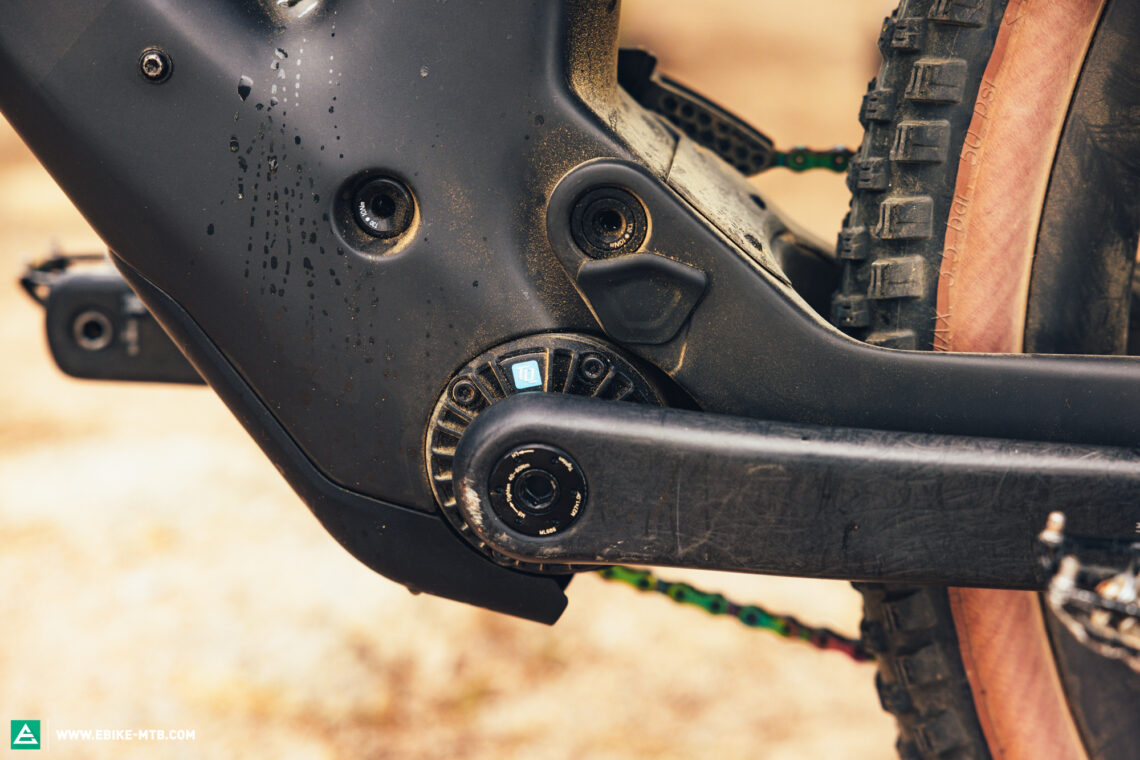
The FAZUA Ride 60 is one of the more powerful eMTB motors in the minimal-assist category of our eMTB motor comparison. In low pedalling cadences, you make as much progress as with the Bosch Performance Line SX, but the FAZUA doesn’t regulate its power output as smoothly, and feels less sensitive in the highest support mode. As a result, it can’t match the natural ride feel of the TQ HPR50 and Specialized SL 1.2. The compact motor can’t be integrated quite as inconspicuously as the TQ either. While ticking a lot of the right boxes technically, a major weakness of the FAZUA Ride 60 is its reliability. The key specs of the Ride 60 are promising and FAZUA have already fixed many of its bugs via software updates. Nevertheless, we’ve had too many technical issues with it thus far. As it stands, buying a bike with a FAZUA Ride 60 motor in the summer of 2023 remains a gamble. FAZUA must remedy this as quickly as possible to spare bike brands and customers further frustration.

The Bosch Performance Line SX is neither the lightest nor the most slender eMTB motor. However, it bridges the gap between full-power and minimal-assist motors, and produces more power than the other minimal-assist models in our eMTB motor comparison, offering excellent performance and a natural riding experience. If you keep the cadence high, it can even keep up to full-power motors on the climbs. So, it’s not the first choice for those who like being pushed along at low cadences, but thanks to the dynamic support, this motor rewards active riders as it responds to your willingness to put in effort with increased assistance. As such, it definitely makes the minimal-assist competition seem a little dated in terms of power output. However, due to its comparatively bulky proportions, it can’t be integrated as discreetly as the more compact minimal-assist units on test. In the minimal-assist eMTB motor test field, Bosch are the only manufacturers with a global and reliable service network as well as numerous configuration options thanks to the comprehensive Bosch eMTB systems lineup. We’re confident that the SX won’t just prove to be a fierce competitor to its full-power CX siblings!
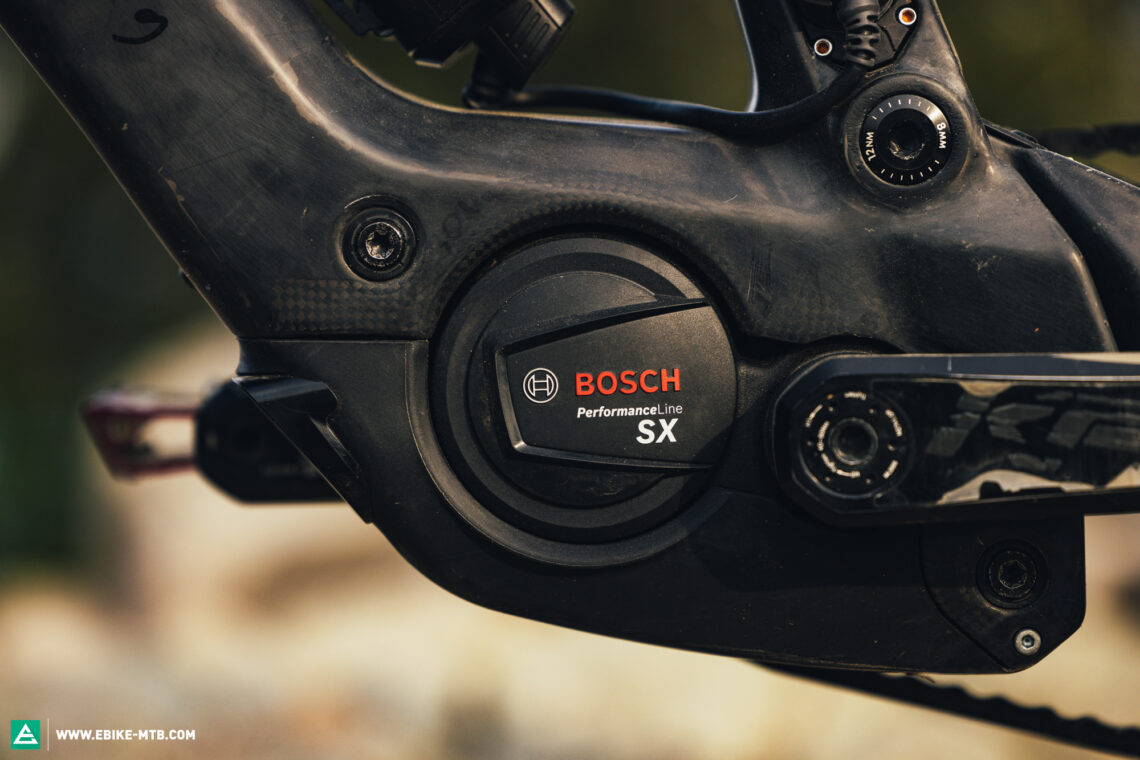
The full-power eMTBs motors at a glance
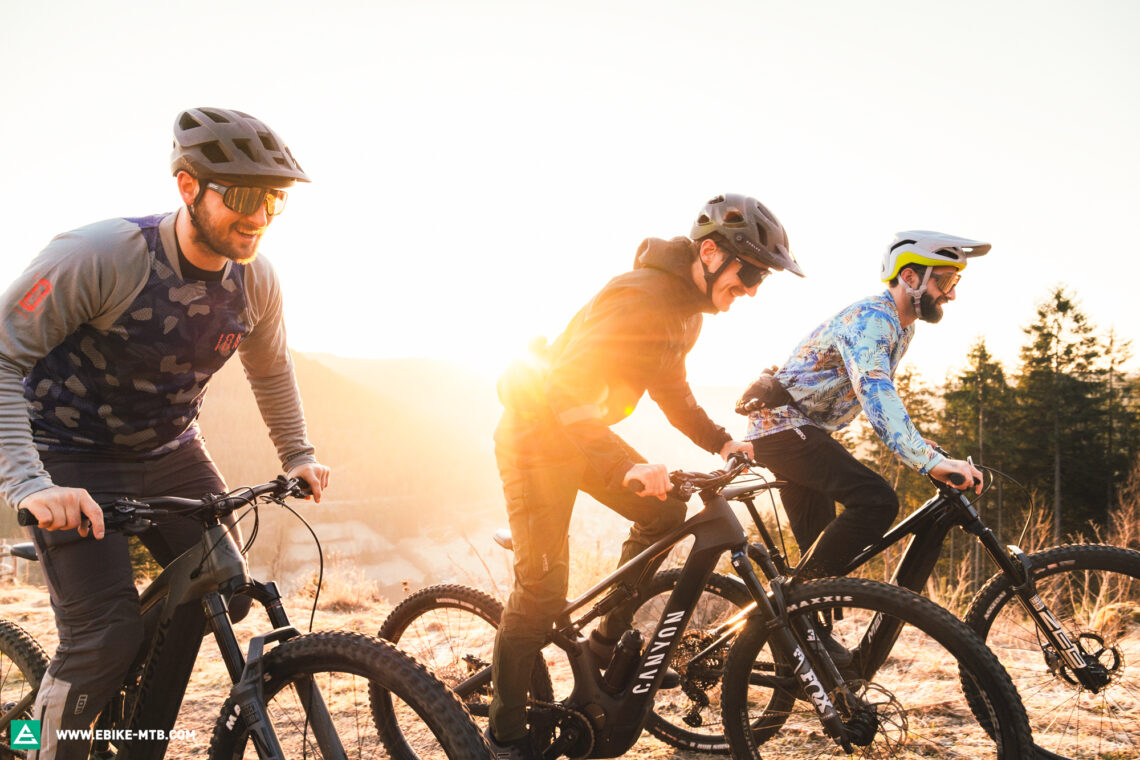
The biggest strength of the Shimano EP801 is its good-natured character. It’s pleasant and easy to ride in any situation. On the one hand, this is because it’s always predictable and never catches you off guard with unexpected responses. On the other hand, it’s easy to modulate even in the highest support mode. As far as its performance is concerned, it’s closing the gap to the Bosch Performance Line CX, which has the same specs on paper. As such, it feels natural, though it’s not for riders who like cruising along without breaking a sweat. Rather, it’s an excellent full-power eMTB motor for beginners who will benefit from its good-natured character, allowing them to grow both their skills and confidence without being thrown off the back of the bike. Riders who like getting a bit of cardiovascular exercise when they’re out for a ride will also find a good companion in the Shimano EP801. One striking drawback, however, is the loud rattling emitted by the motor on the descents – a long-standing gripe with all Shimano eMTB motors.
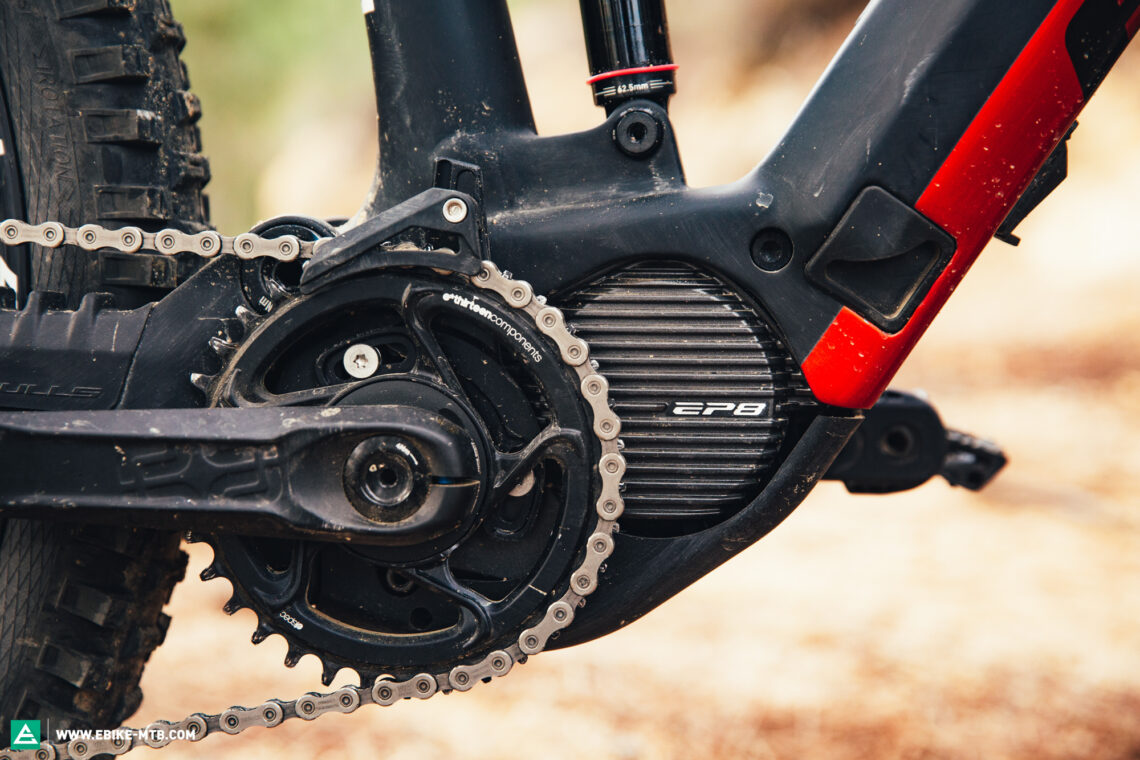
Based on the Yamaha PW-X3, the GIANT SyncDrive Pro 2 does a lot of things better than the motor it’s based on. Although the remote and display don’t deliver a lot in terms of information content, they’re neatly integrated. On paper, it’s 85 Nm torque output puts it midfield amongst the full-power models on test, and that’s where it places on the trails too. As far as the motor’s assistance is concerned, it feels more powerful than the Shimano EP801, but also less predictable. The Bosch Performance Line CX motor delivers more power while being easier to control. In Automatic mode, however, the GIANT SyncDrive Pro 2 is much more economical with its power. This dynamic support mode provides a lot of reserves, especially on flat terrain, while delivering a good punch on the climbs. As such, it’s an interesting option for trail riders who enjoy a bit of powerful assistance on the steeper inclines.
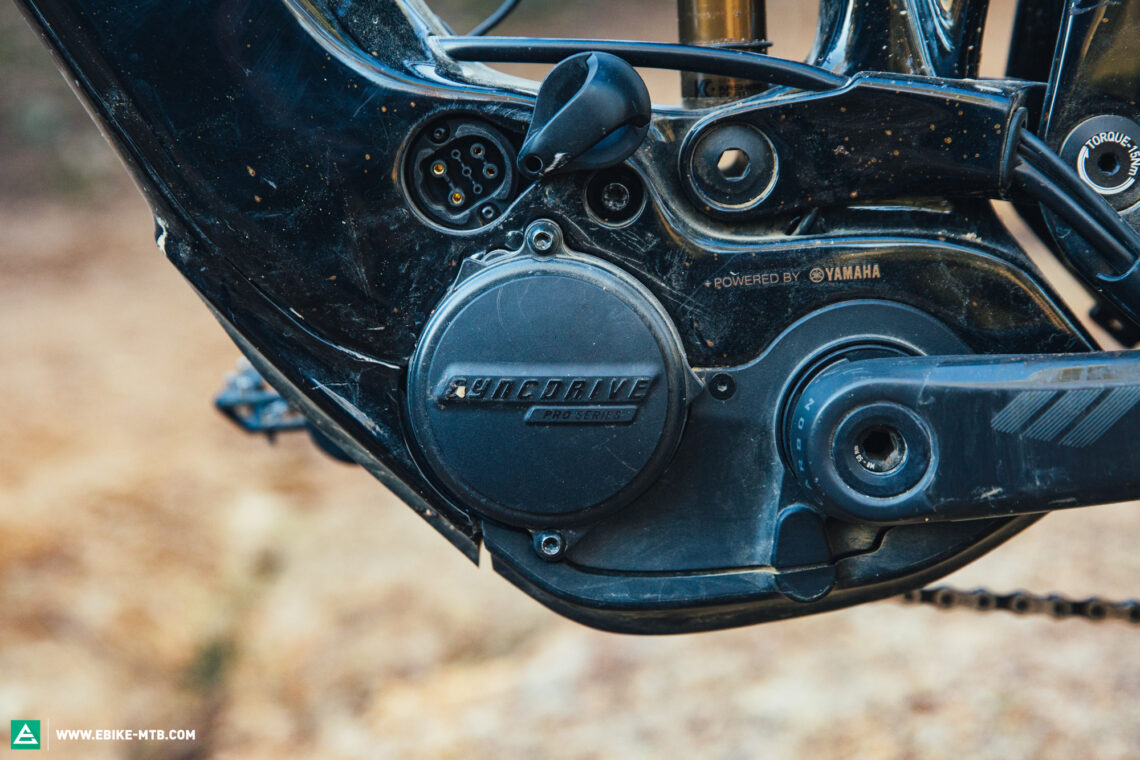
All Brose motors aren’t equal. No other manufacturers in our eMTB motor comparison gives bike brands as much free reign in terms of the motor’s characteristics and integration as they get with the Brose Drive S Mag. In this case, the quality of the eMTB system ultimately depends on the implementation of the respective bike brand. Although the motor delivers an impressive performance in terms of its power output, its characteristics on the trail can vary significantly from one bike brand to the next. The model on test was able to convince us with a natural ride feel, despite the ample power available. It makes easy work of the steepest climbs, and the Brose Drive S Mag certainly doesn’t have to hide from the most powerful eMTB motors in the test field. However, there are better motors for leisurely gravel roads and extended tours. It also falls behind much of the competition in terms of connectivity.
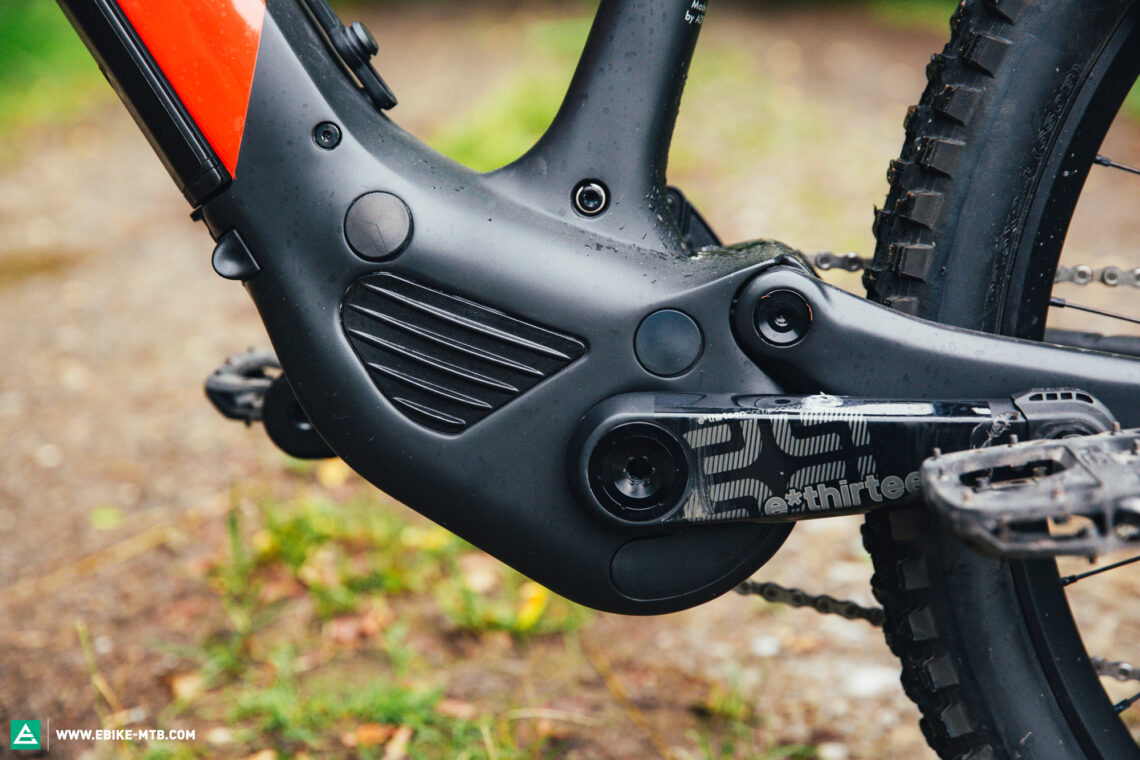
Specialized have always thought of their eMTB motors as forming integrated units with their bikes, taking a holistic approach, and offering complete packages made up of displays, batteries, remotes, and connectivity systems. This approach results in the most seamless systems in our eMTB motor comparison. Based on the Brose Drive Mag S, the Specialized 2.2 eMTB motor is one of the most powerful models on test, though it uses its power wisely. The Bosch Performance Line CX Race has even more punch than the Specialized 2.2, but it’s also harder to control. Both beginners and advanced riders will find a loyal companion in the Specialized motor, allowing them to take technical climbs to the next level. It also cuts a fine figure on longer loops thanks to its well-balanced power delivery. The new Specialized app, which is based on the proven Mission Control app, is one of the best and most intuitive apps in the test field, encouraging you to play around with the settings. It’s only the ample proportions of the motor that have become somewhat outdated.

The Bosch Performance Line CX is not the most powerful, lightest, or quietest full-power eMTB motor on test, but it’s an absolute top dog, nonetheless! Rather than a specialist in any particular field, it’s an excellent all-rounder. Whether on steep, technical climbs or on relaxed tours, the Bosch Performance Line CX lets both beginners and pros ride to their full potential. The German motor experts also show the competition how it’s done in terms of connectivity thanks to an intuitive app with easy motor tuning and integrated navigation features, providing real added value. But the CX is under increasing pressure from its in-house competition, the even more powerful Performance Line CX Race motor, and the significantly lighter SX model, capable of the same maximum power output. Bosch are the most popular brand in the eMTB motor segment by far, and have been voted the best brand in our E-MOUNTAINBIKE reader survey for several years in a row – more than ever, the German colossus remain the measure of riding performance, configuration options and service infrastructure.

Although the Bosch Performance Line CX Race is specifically tuned for racing, that doesn’t make it less versatile than the conventional CX. On the contrary, it can do everything its CX sibling can, but with less weight, and the additional Race mode. On technical climbs, the longer sustained assistance and even higher support ratio offered by Race mode opens up previously undreamt of line choices and riding manoeuvres. However, this also demands the requisite riding skills, because it will keep you on your toes as you try to keep the front wheel on the ground, especially if you’re a beginner – depending on the bike that it’s in, of course. With suitable skill to benefit from the extra assistance, however, this motor can be a hoot to ride, and it’s not just reserved for racers. If the punchy Race mode is too much for you, you can simply shift down a gear and select one of the other modes, like the very well-balanced, dynamic eMTB mode, giving you the classic yet still excellent all-round characteristics of the Performance Line CX eMTB motor!
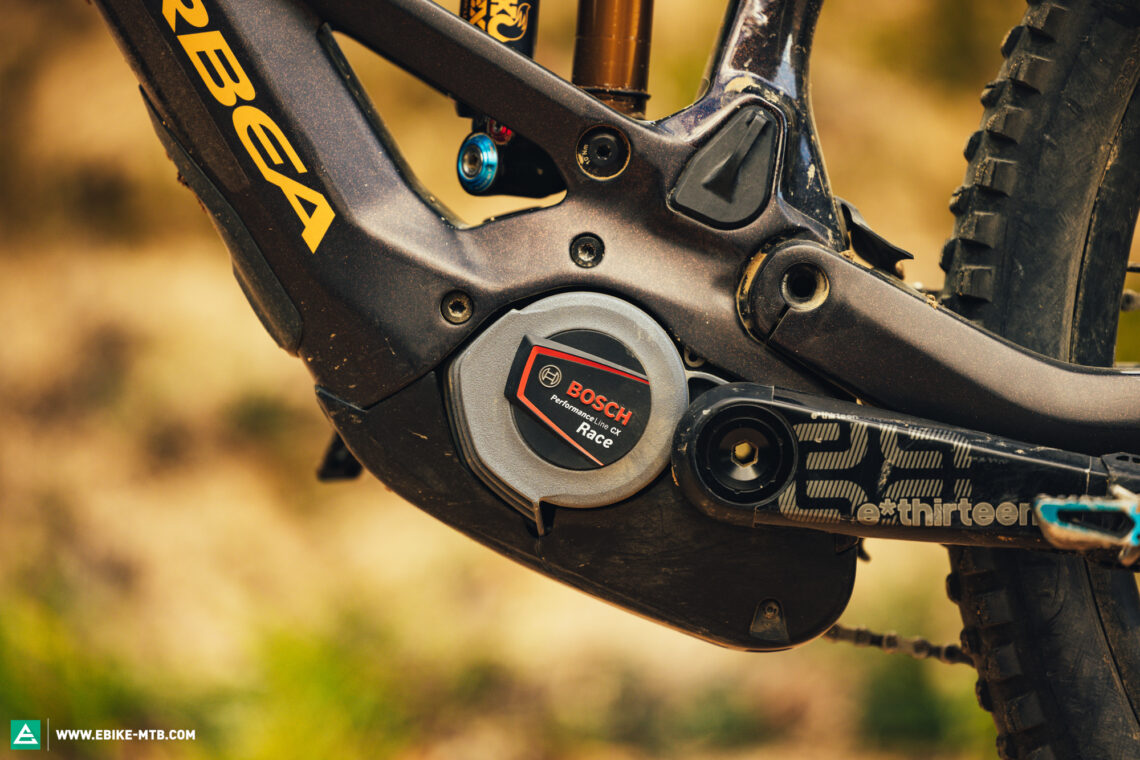
The Yamaha PW-X3 has a lot of power, but what it has in power, it lacks in control. The power delivery is very turbulent, making this eMTB motor the ruffian on the playground. On technical terrain, the Yamaha PW-X3 is primarily designed for advanced riders who can handle the sudden and unmitigated power delivery, using it to their advantage. Beginners and intermediate riders will find themselves focusing solely on keeping the front wheel on the ground. In the dynamic Automatic mode, the power delivery feels significantly more restrained, and the motor doesn’t surge forward quite as brusquely. However, it then lacks the pep required for steep climbs. While the motor can flex all its muscles at low cadences, it quickly runs out of steam at higher RPMs, in which case it has to move over for the Bosch Performance Line CX and the Panasonic GX Ultimate. For trail riders who can handle the acceleration, the Yamaha PW-X3 allows you to chug along with minimal effort at a low pedalling cadence. However, it’s not just the power-delivery that lacks refinement, but also the ecosystem around it. The competition leaves this Japanese brand in its wake in terms of connectivity and integration, where they could learn a thing or two from their customer, GIANT.
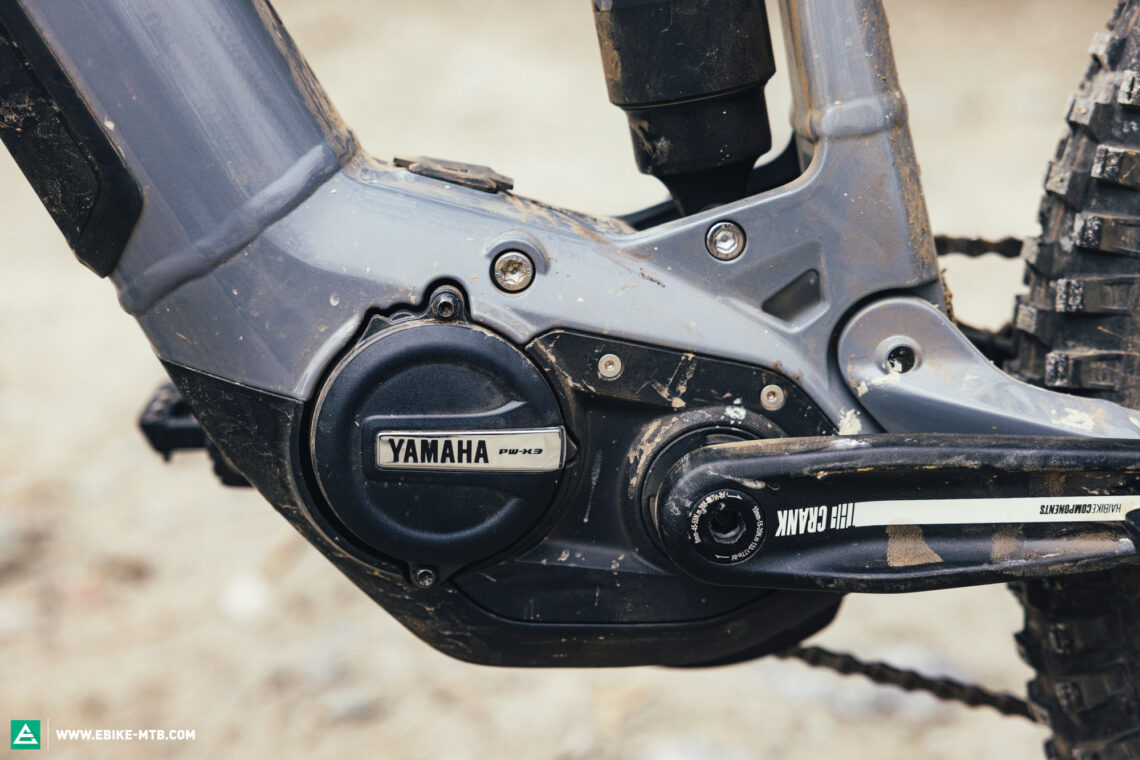
With a specified torque output of 95 Nm, the Panasonic GX Ultimate is the most powerful motor in our eMTB motor comparison. It also feels very powerful on the trail, but it’s difficult to control due to the very direct and unmitigated power delivery, especially on technical terrain. Motors like the Specialized 2.2 or Bosch CX are much easier to handle, even for beginners, while offering a similar amount of power. Once you’ve got going, however, the Panasonic GX Ultimate will shuttle you along on forest service roads, effortlessly pushing you up the steepest inclines at low pedalling cadences and with little input. In general, it lacks balance and requires some more fine-tuning.

With the Pinion MGU E1.12 motor-transmission unit, the German bicycle gearbox company have made their debut in the eMTB motor segment, promising nothing short of a revolution and delivering some exciting results. The combination of a powerful and responsive motor and Pinion gearbox has what it takes to change the eMTB market as we know it. However, the MGU is currently being held back by its irregular shifting performance. Particularly active riders, who enjoy taking on technical climbs that require fast and direct shifting, shouldn’t go for this option (yet). Moreover, it unleashes the abundant power on tap very suddenly in the highest support mode, which makes it difficult to modulate. In its current form, the motor is ideally suited for long-distance touring, in which case you also benefit from low maintenance and smart shifting features.
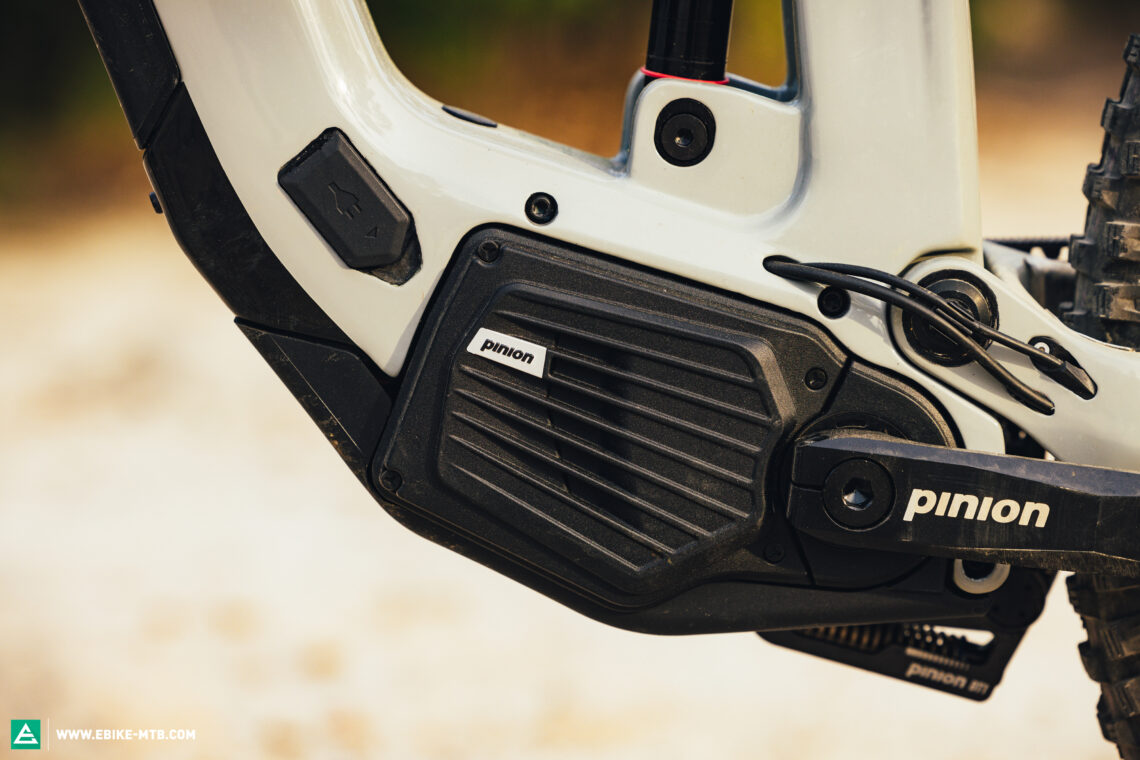
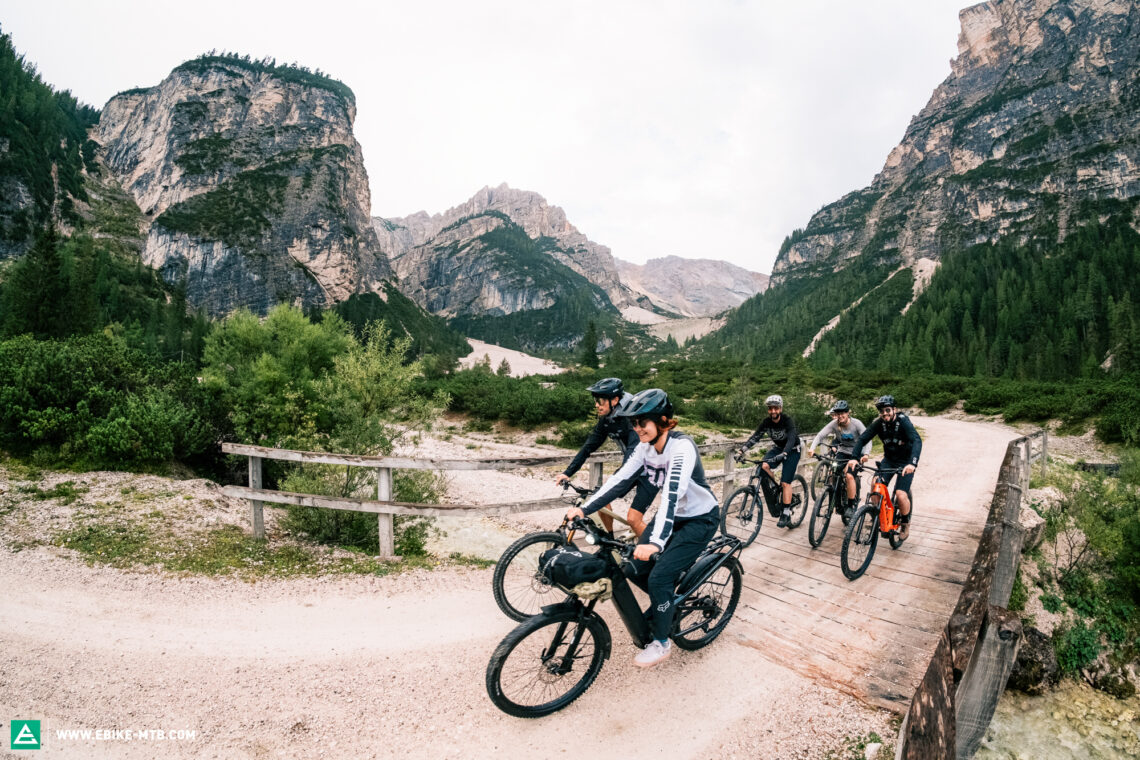
Which is the best eMTB motor for you?
There are a few concrete criteria and details that you should look for in an eMTB motor system. Performance specs like the torque or maximum power output should never be your focus. To have a good time on the bike, things like responsiveness, modulation, power delivery, and noise are just as important as the ecosystem surrounding the motor. In terms of hardware, this means intuitive and ergonomic remotes, and sensible display options, coupled with good connectivity and customizability on the software side. Bonus features like GPS tracking modules or integrated anti-theft functions can also make sense for a lot of riders. You should definitely consider the reliability of the system and the manufacturer’s service network when buying, especially if you’re planning to travel outside of Central Europe and the main eMTB boom markets. While you’re sure to get impeccable service there, some manufacturers will leave you stranded in any other part of the world! Of the manufacturers in our eMTB motor comparison, Bosch, Shimano, Specialized, and GIANT are the most well-established.
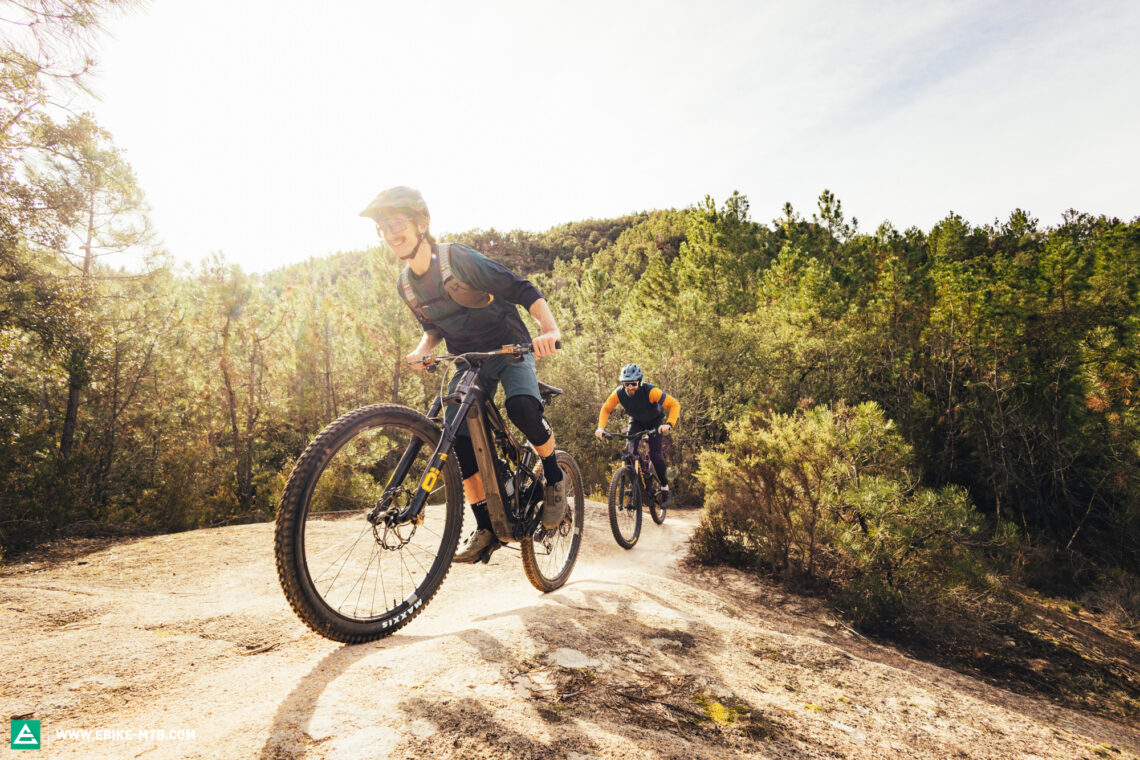
We’re finding ever more specialists among the eMTB motor systems on the market, but the all-rounder options are continuously improving too. For example, the eMTB motor systems from TQ and Pinion are destined for a rather specific use case. On the other hand, motors like the Bosch Performance Line CX, Shimano EP8, and Specialized 2.2 can assert themselves as reliable all-rounders with a diverse range of applications, allowing almost any rider to find the right setup for them. The Bosch Performance Line CX Race even tops that – it has all the functions of the CX, but it’s lighter and opens up new possibilities for skilled riders with its Race mode. The Bosch Performance Line SX is sure to be an incredibly exciting option for slightly more active riders who want a lighter bike, though without missing out on performance. In terms of riding experience, connectivity, and holistic ecosystems, Specialized set the standard in our eMTB motor comparison. Together with their eMTB development centre in Cham, Switzerland, the Californian company invest more heavily in developing their own motor systems than any other brand, allowing them to offer a well-refined and coordinated ecosystem that’s tailored to the bike – in theory, at least, because they overshot the mark somewhat with the Turbo Levo SL Kids eMTB. We recently took a look at what goes on behind the scenes in Cham and wrote about it here.
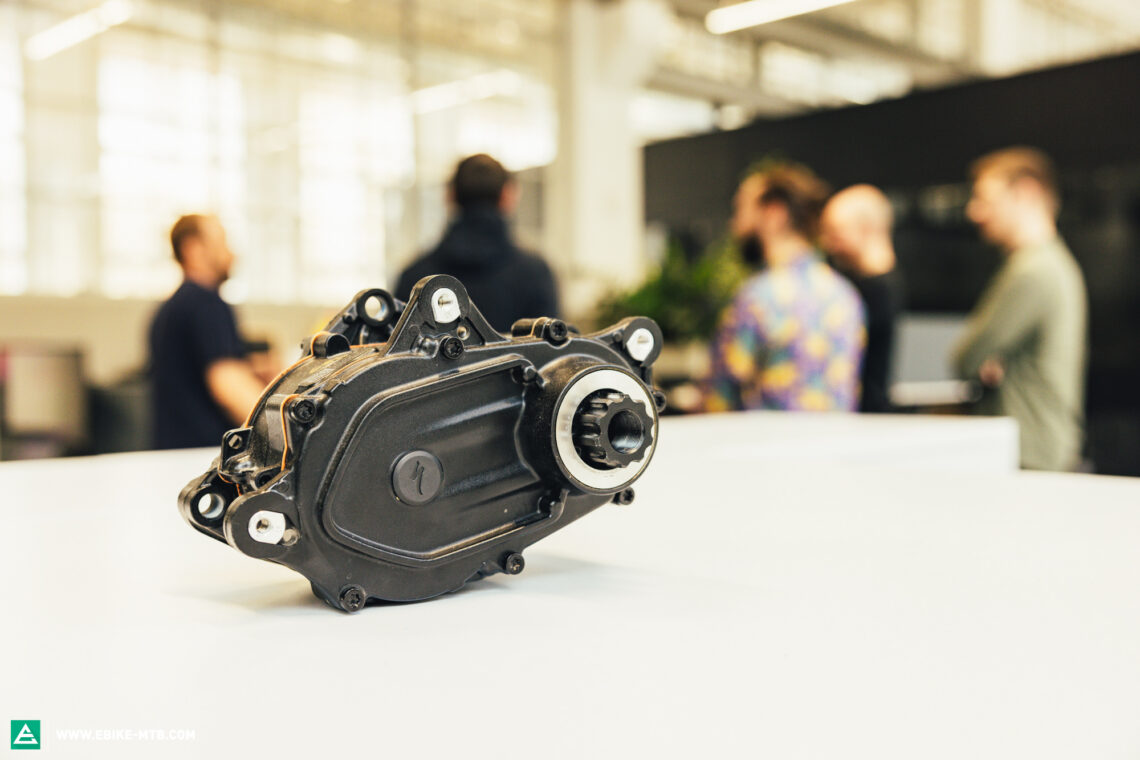
Should you get a full-power or minimal-assist eMTB motor? The boundaries between the concepts and individual eMTB motor systems are becoming increasingly blurry. That’s why we no longer talk about light motors, now referring to them as minimal-assist motors instead. It’s the battery and bike that determine whether a bike is a light eMTB or not. Ultimately, you should never buy an eMTB based on the motor alone, but always choose a bike with a motor and battery concept that caters to your needs! With the right system, there’s no longer any reason to have range anxiety, while allowing you to avoid lugging around unnecessary weight and incurring unnecessary costs. The numerous battery concepts on the market offer a suitable battery capacity for every use case. This ranges from lightweight, low-capacity batteries to huge power banks. Besides, more and more systems give you the option of a range extender, so that you can up your battery capacity when needed.
The battery doesn’t just affect your bike’s range, but also its handling: the bigger the battery, the heavier the bike. The weight distribution has a particularly significant influence on the handling of a bike. That is why some manufacturers choose to combine a full-power motor with a small battery and, if necessary, also limit the power output of the motor via the software. This gives you the punch and power of a full-power model in a lighter package, with all the benefits that come with it. Good examples of this include the Orbea Rise with the Shimano EP8 RS, the ROTWILD R.X375 with the Shimano EP8, and GIANT with the SyncDrive Pro2 motor. If your climbs tend to be short and steep, and you value more natural handling on the descents, these can be great options.
As you can see, there aren’t any clear categories, and it ultimately always depends on the implementation from the bike brand. Motors like the FAZUA Ride 60 and Bosch SX from our eMTB motor comparison are designed with this in mind, attempting to strike an even balance between weight and performance. If you must think in categories, the Bosch Performance Line SX motor clearly plays in the league of minimal-assist motors in terms of weight. In terms of maximum output, however, it’s on par with the full-power models. If you’re willing to put in the effort, it can keep up with most full-power eMTB motors. As such, you will also see it getting paired with bigger batteries and partially displacing the more powerful Bosch CX from the market.

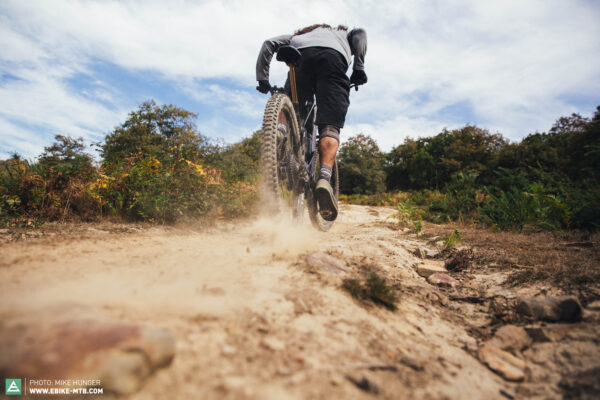
If you want a light and agile bike and therefore choose to go with a minimal-assist motor, you should also make sure that the bike’s handling is in fact as light and agile as the system allows it to be. Depending on how far you want to head off the beaten track, you won’t want to compromise on the durability and off-road capability of the components either. On the other hand, if you combine it with the biggest full-power motor and a huge, heavy battery, there will be little left of the bike’s light-footed handling. As you can see, you shouldn’t let your thinking be limited by categories, but appreciate the diversity between the systems and find the best combination that suits your specific needs.
Instant power delivery with lots of power for the steepest, most technical climbs, or a more natural ride-feel for relaxed tours? A massive battery for extended loops or a compact model for quick rides and more agile handling? Do you want to control everything from the handlebar and have access to all the information via the onboard display, or do you prefer a minimalist display and remote with a cleaner look? How important is it to you to be able to tune and customise the motor? Do you want to adapt everything to your exact requirements or are you happy with the standard settings and would rather spend your time riding? Only you can answer these questions. With our eMTB motor comparison, we hope to help you find the right product for your requirements and needs – and avoid buyer’s remorse and frustration in the process.

Check out the individual eMTB motor reviews for a deeper dive into each system, as well as insights into the respective strengths, weaknesses, and potential of each eMTB motor system on test. Note: the best eMTB motor can only be as good as the bike it’s in. However, even if it ultimately all comes down to the overall package, it’s still worth your while to take an in-depth look at the various eMTB motors on the market, helping you avoid nasty surprises and get your money’s worth!
The test field
All ebike motors in test: Bosch Performance Line CX (Click for review) | Bosch Performance Line CX Race (Click for review) | Bosch Performance Line SX (Click for review) | Brose Drive S Mag | FAZUA Ride 60 (Click for review) | GIANT SyncDrive Pro2 (Click for review) | Panasonic GX Ultimate (Click for review) | Pinion MGU E1.12 (Click for review) | Shimano EP801 (Click for review) | Specialized SL 1.2 (Click for review) | Specialized 2.2 (Click for review) | TQ HPR 50 | Yamaha PW-X3 (Click for review)
Did you enjoy this article? If so, we would be stoked if you decide to support us with a monthly contribution. By becoming a supporter of E-MOUNTAINBIKE, you will help secure a sustainable future for high-quality cycling journalism. Click here to learn more.
Words: Mike Hunger, Felix Rauch, Rudolf Fischer, Robin Schmitt Photos: Various, Illustrations Marvin Langner









